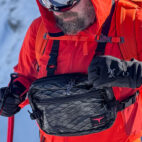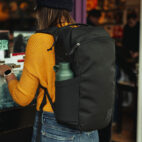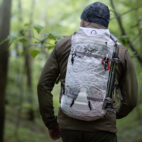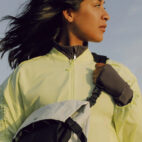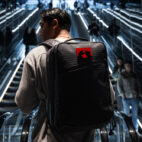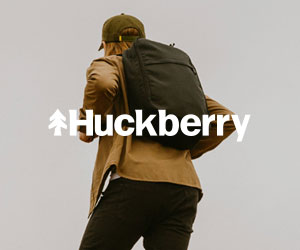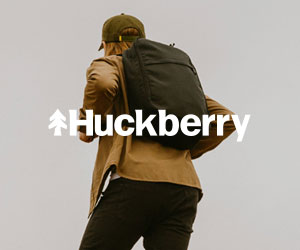
Backpacks
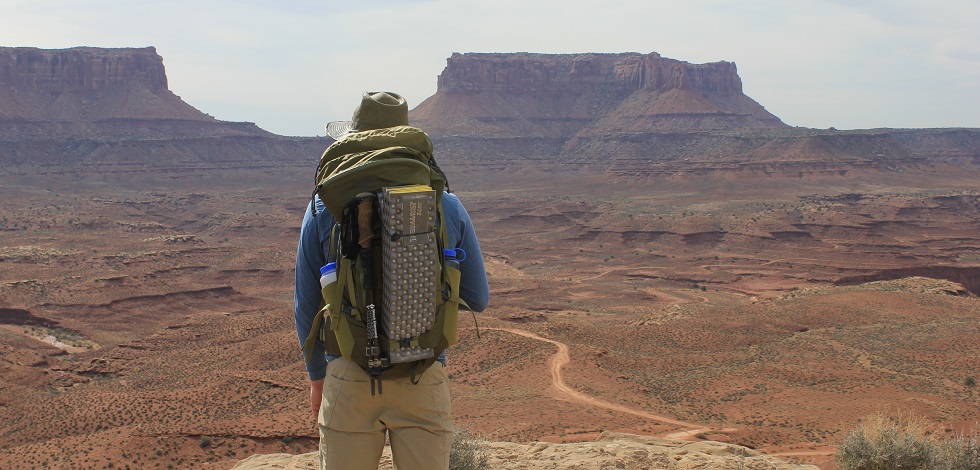
When we first saw the Mystery Ranch Stein 62 at OR Summer Market in 2016, we knew we needed to take it for a spin. Everything about the bag seemed to raise the bar. Finally, Mystery Ranch’s legendary load hauling capability was available in a lighter version of the Glacier with the same Mountain Frame. Multiple organization options, three access points to the main compartment, and a lid that turns into a kicker bag were more than enough to pique our interest. After a solid season of play in the PNW and a cross-country road trip, the verdict is in.
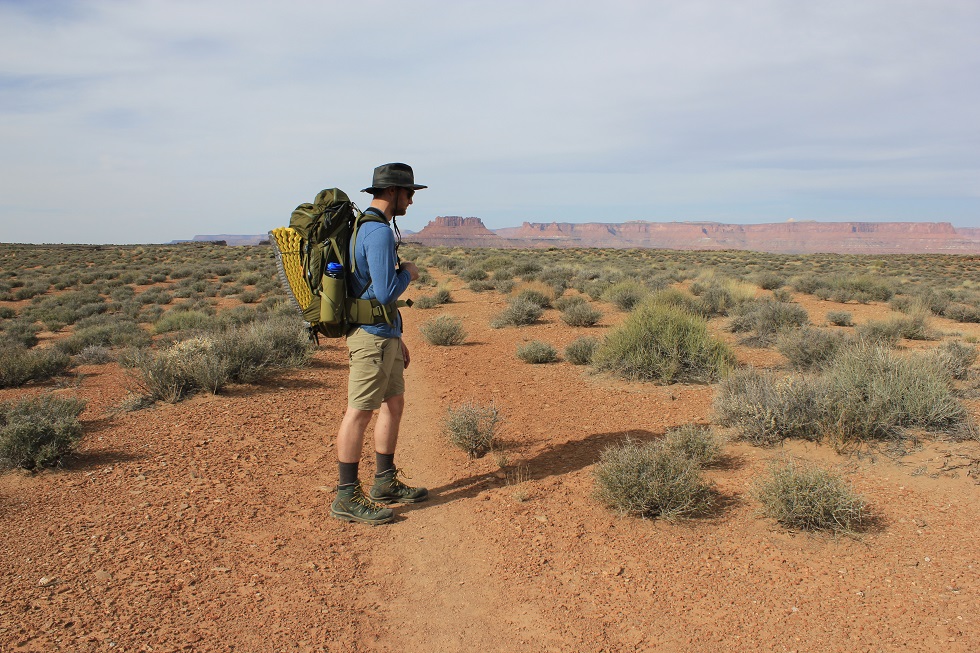
Specifications
- Name: Stein 62
- Brand: Mystery Ranch
- Format: Backpack
- Measurement: 36.5"x17"x14" (93x43x36cm)
- Capacity: 3783 cu-in (62L)
- Weight: 4.7 lbs (2.1 kg)
- Zippers: PU-coated YKK coil zippers
- Material: 400D Nylon
- PriceUS$ 299
Who It Suits
If you’re hauling heavier loads and require gear that won’t quit, this bag is up to the task.
.
Who It Doesn't
Ounce counters; there are lighter, faster, farther options out there.
Design
Looks
The two colorways are both attractive in my opinion. The urethane-coated zips and the SR buckles on the Moss colorway I received are nearly a dead-match. Overall, it’s a good-looking bag and one I’m stoked to carry. If I had to do it again, I think I’d pick up the Clay colorway.
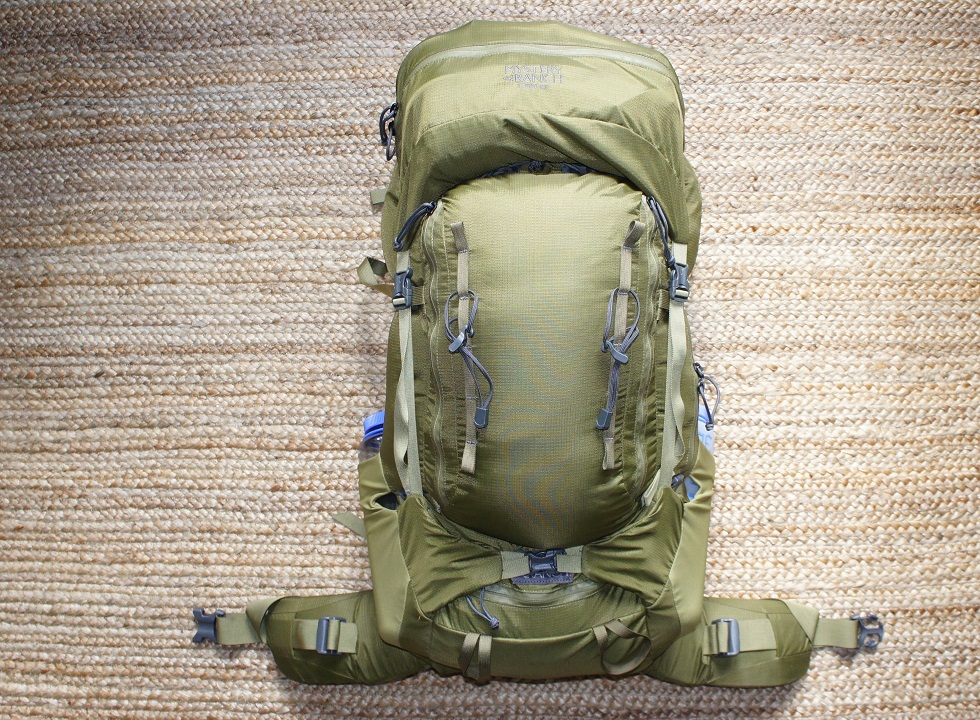
Construction
So solid. Take for granted, forget all about it, never have to worry: Solid. Everything is in the right place. The compression straps aren’t getting tangled up. The SR buckles are intuitive and quickly find their respective mates. The side access zip and lid pockets each have two sliders with nice zipper pulls, so you can set them how you want and access your contents more conveniently. It’s an airtight build from MR.
"If you’re hauling heavier loads and require gear that won’t quit, this bag is up to the task."
Materials and Hardware
All top-of-the-line ingredients: 400D Nylon, Duraflex SR buckles, Woojin Plastics cord locks, urethane-coated YKK zips.
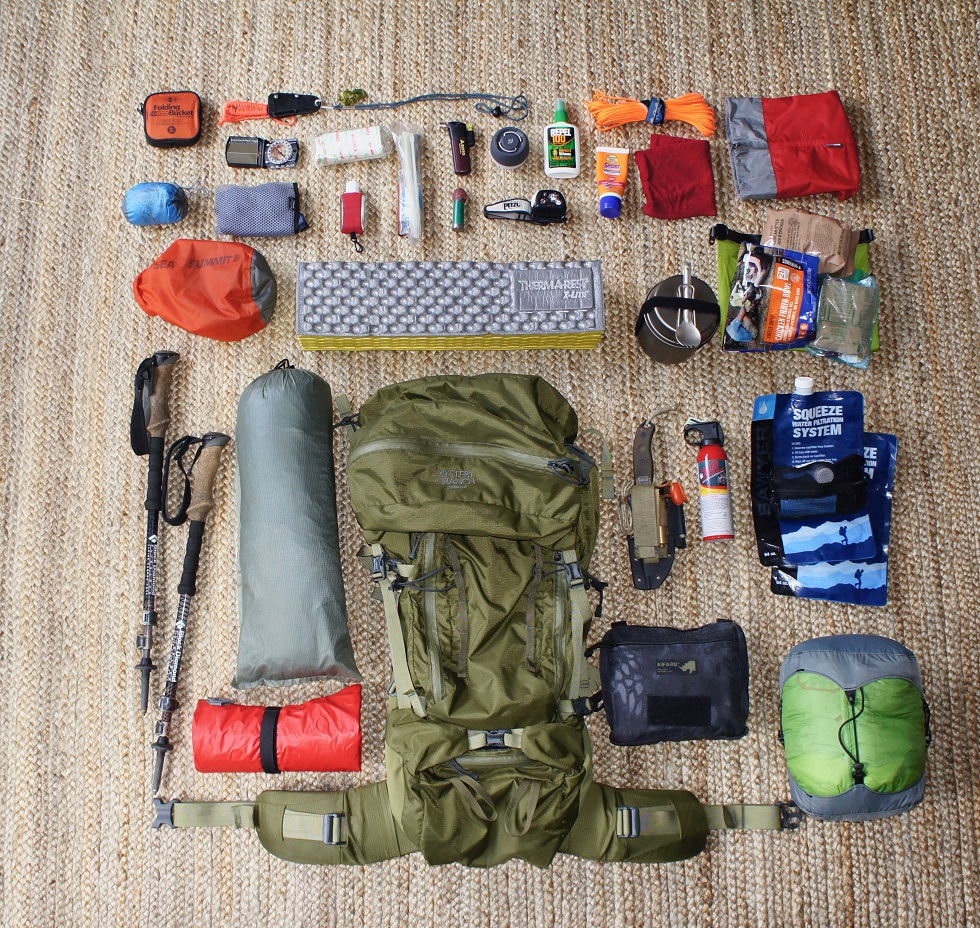
Features
Dual tool attachment
MR provides two tool loops and moveable bungie retention on the daisy chain. I’m not stoked on the Woojin cord locks. They don’t really have a solid purchase on the elastic cordage, but that’s pretty minor. Just keep them under good tension and the hooks should hold.
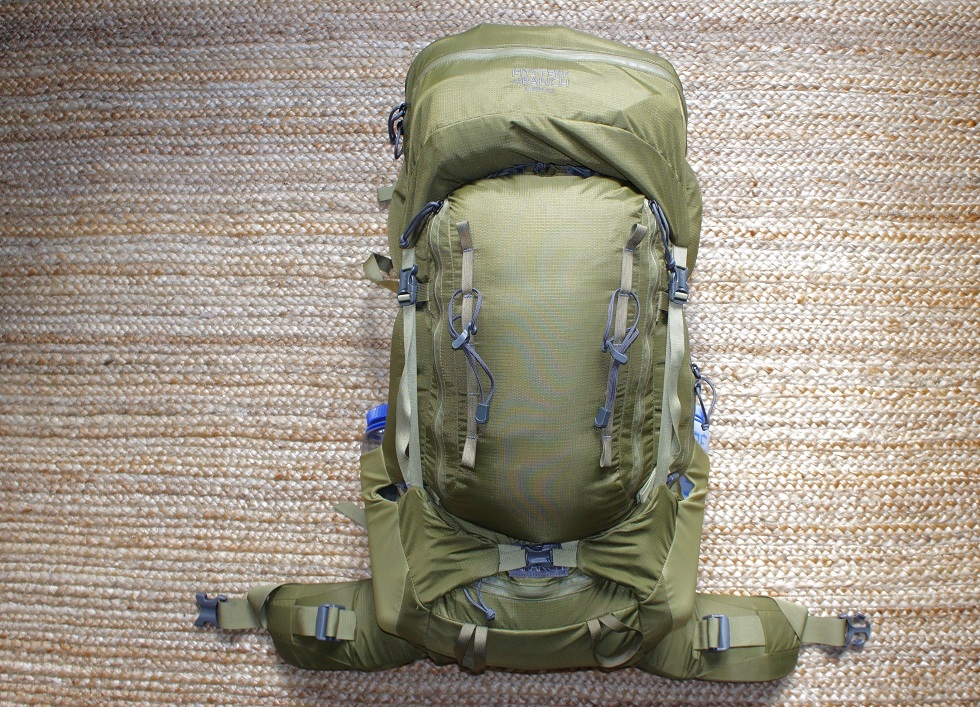
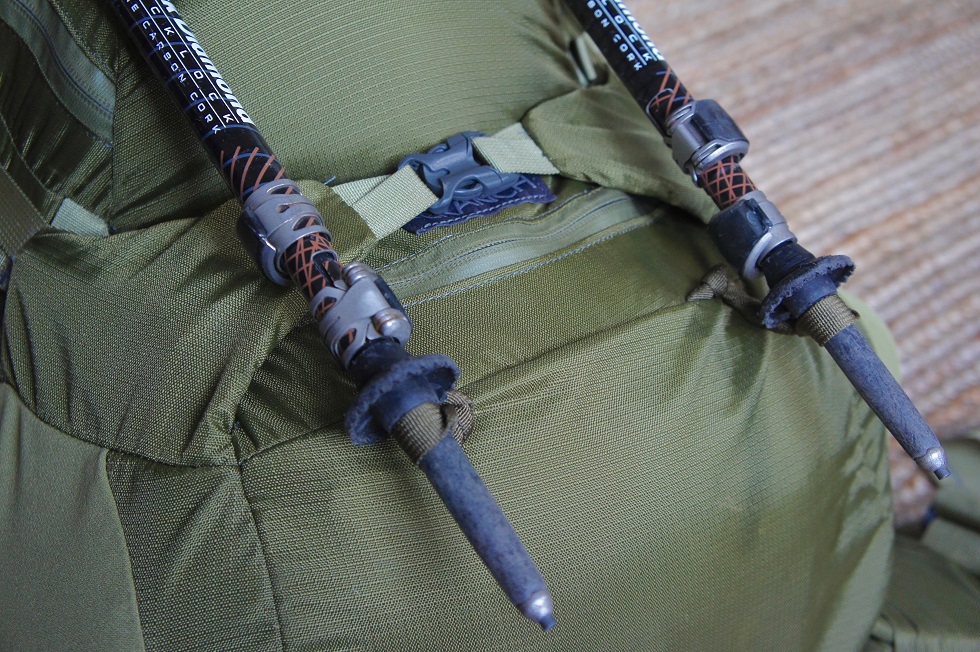
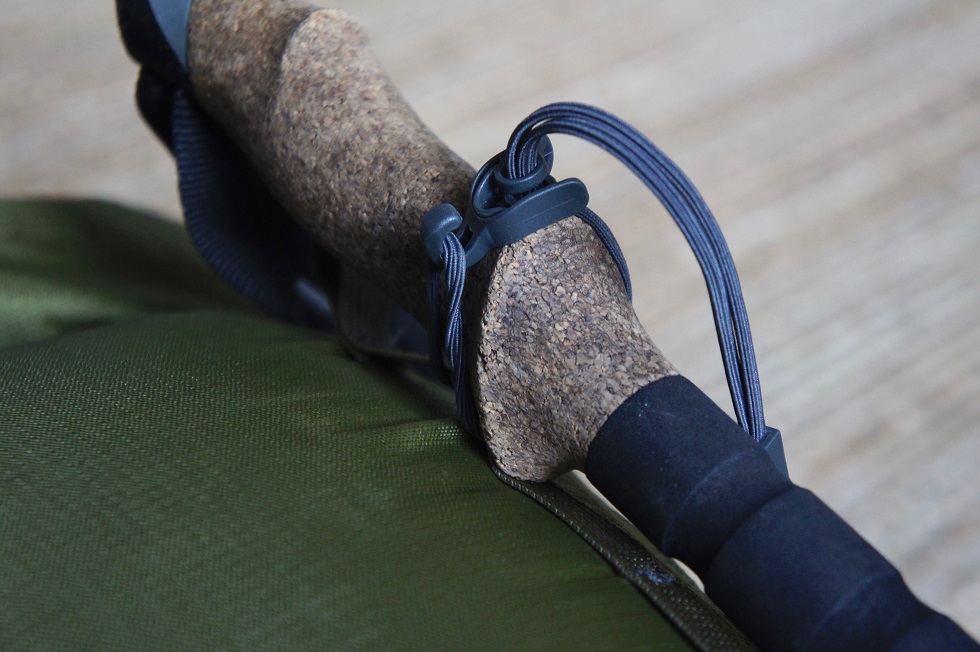
Sleeping bag compartment/compression/access
I had no problem getting in a 15-degree down bag, or a 40-degree synthetic bag with an extra puffy in the same compression sack. MR added a compression strap to help get warmer bags under control and relieve some pressure off the compartment’s zipper. Two SR buckles on the interior engage a divider between the main compartment and the sleeping bag compartment. Disengage the SR buckles if you’ve got a huge sleeping bag and need overflow space or just prefer an open main compartment. I didn’t care for how cluttered the interior is with compression straps and SR buckles, but once you buy in and use them, you really get the full benefits that the pack offers.
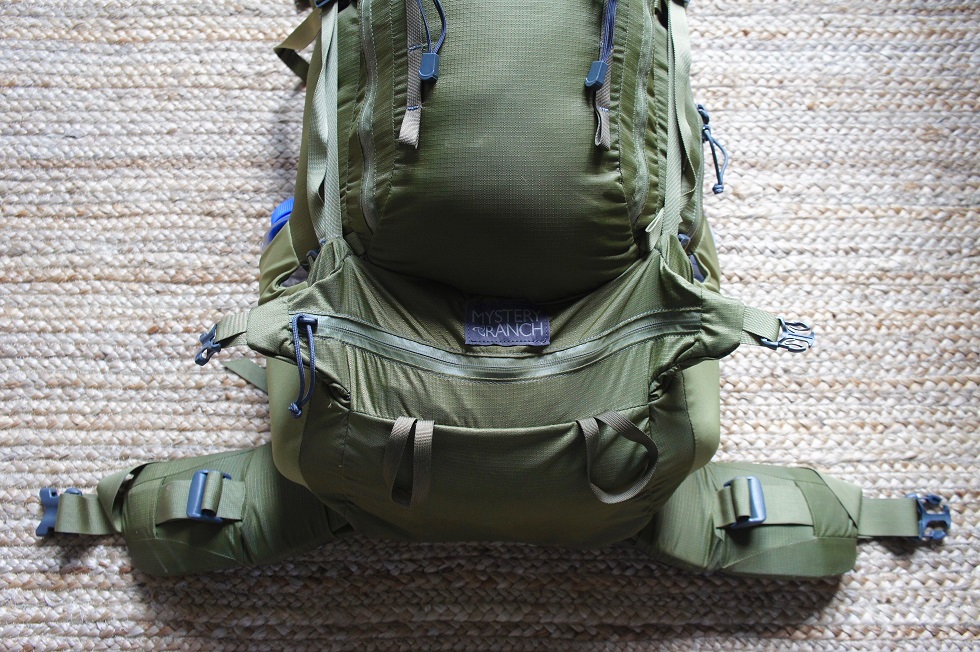
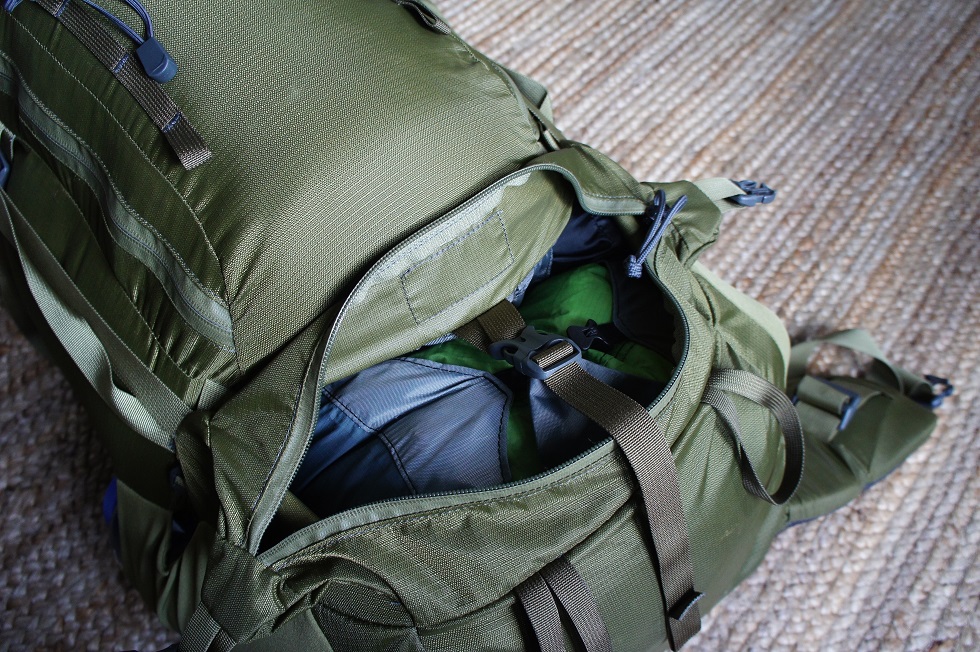
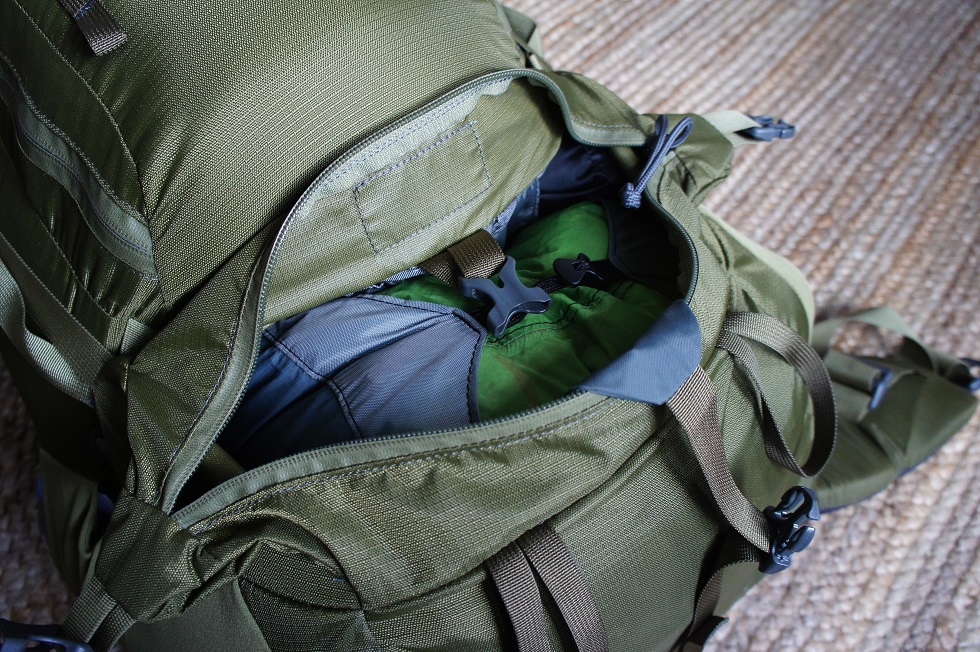
Side access zip
Side zip access to the main compartment is always nice to have. The Stein has so much organization to offer as is, so this really just serves to sweeten the deal.
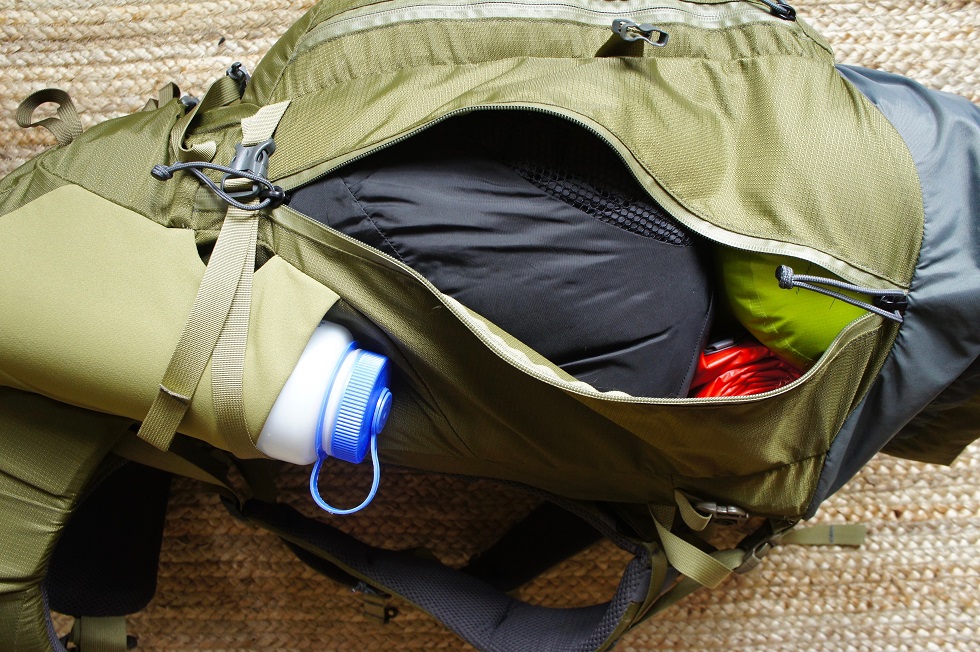
Daisy Chain
Necessary and functional. Nothing fancy. I am interested in how MR backed off the webbing. I wonder if that comes from years of field testing and bag wizardry or from a manufacturing efficiency standpoint.
"I didn’t care for how cluttered the interior is with compression straps and SR buckles, but once you buy in and use them, you really get the full benefits that the pack offers."
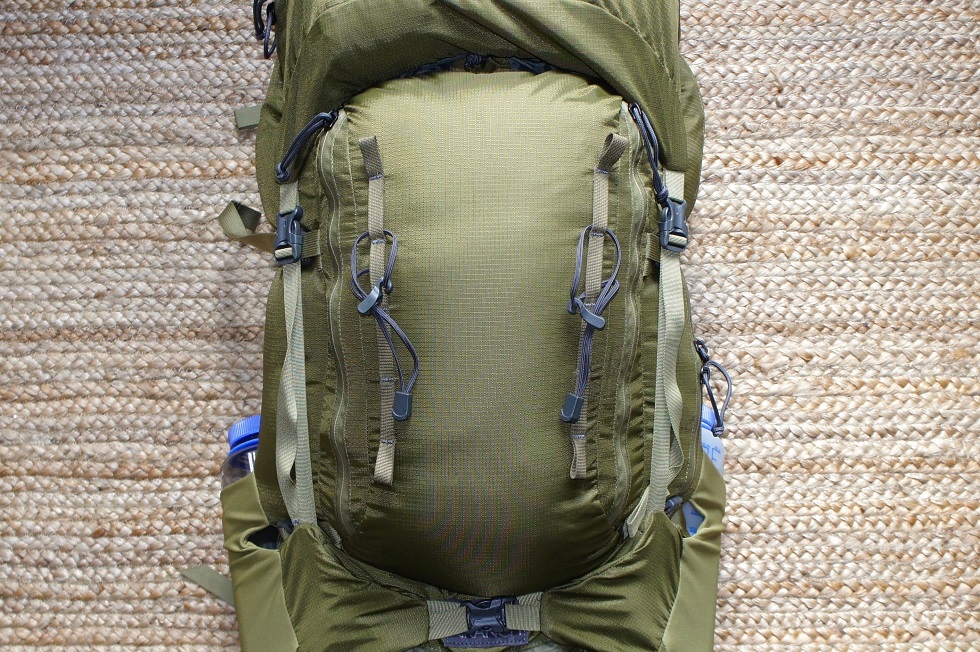

Two zippered front face pockets
MR gives you two generous front face pockets. These are interesting for two reasons. The first is that the smaller pocket is three-dimensional. Most pockets in this layout are larger envelope-style pockets. A 3D pocket offers better usable volume over the same footprint. The second is that they are independent of the main compartment, but are sewn into one another—so they’re fighting for the same volume. The smaller of the two, measuring 5.5x2.5x15” is sewn into the larger which has a back panel 12x16 and a front panel of 9x16”.**
**All measurements are rough approximations provided to give our readers an idea of volume and potential storage options.
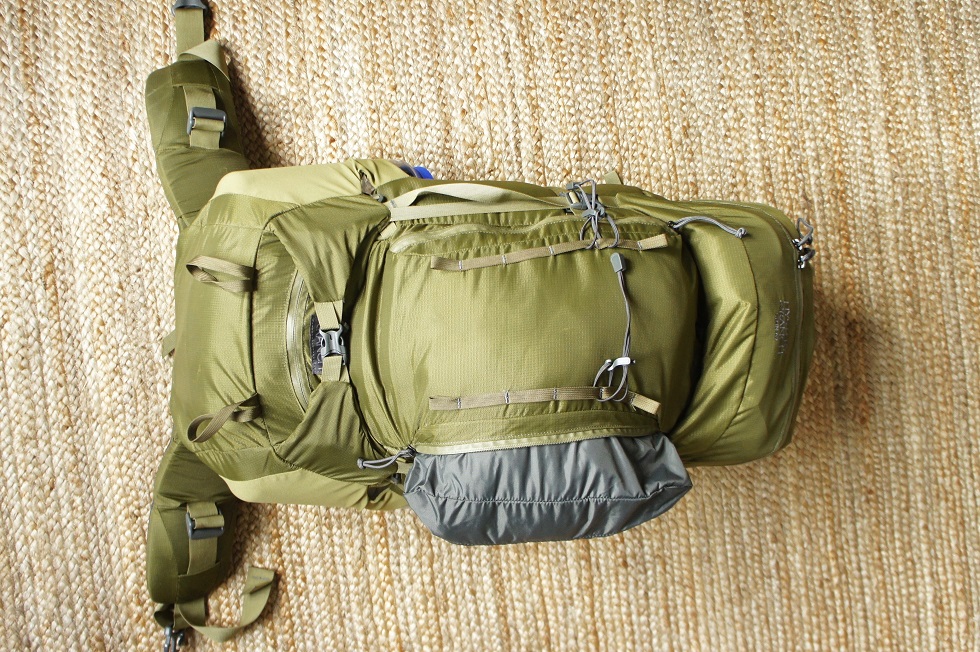
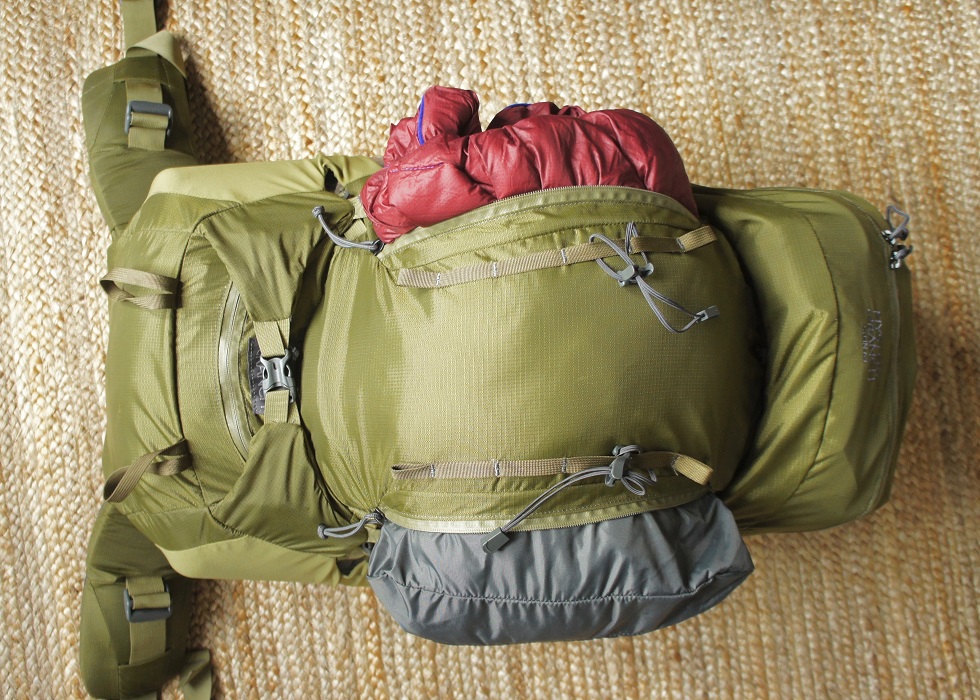
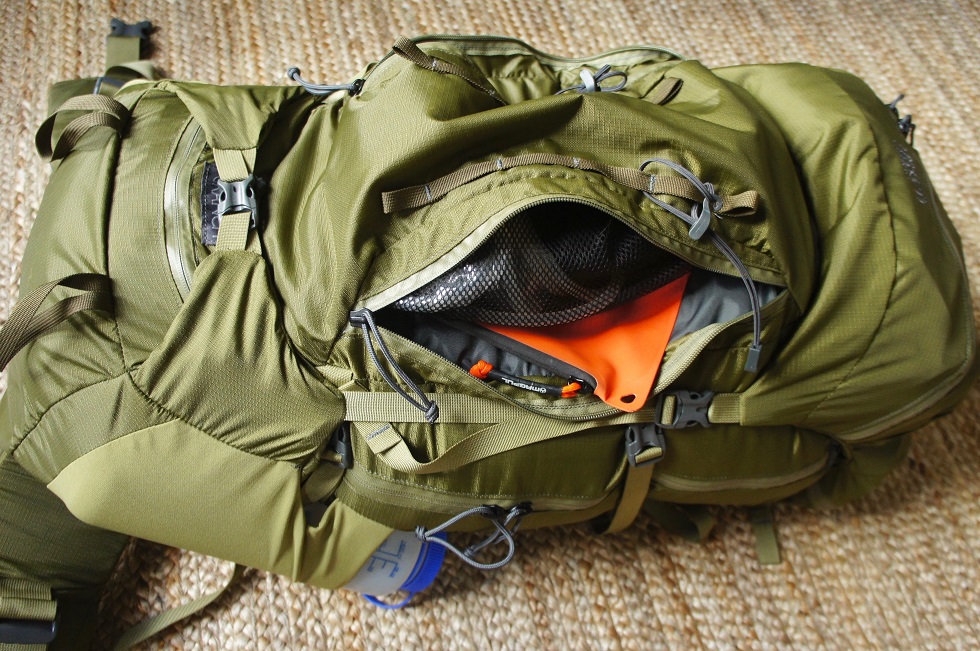
Two stretch woven side pockets
I typically keep my bottles in the side pockets. Longer items like tent poles work well here too—there’s an extra strip of 400D where the pocket meets the pack wall which should reinforce the pocket and protect the stretch woven material from abrasion when setting your pack on the ground.
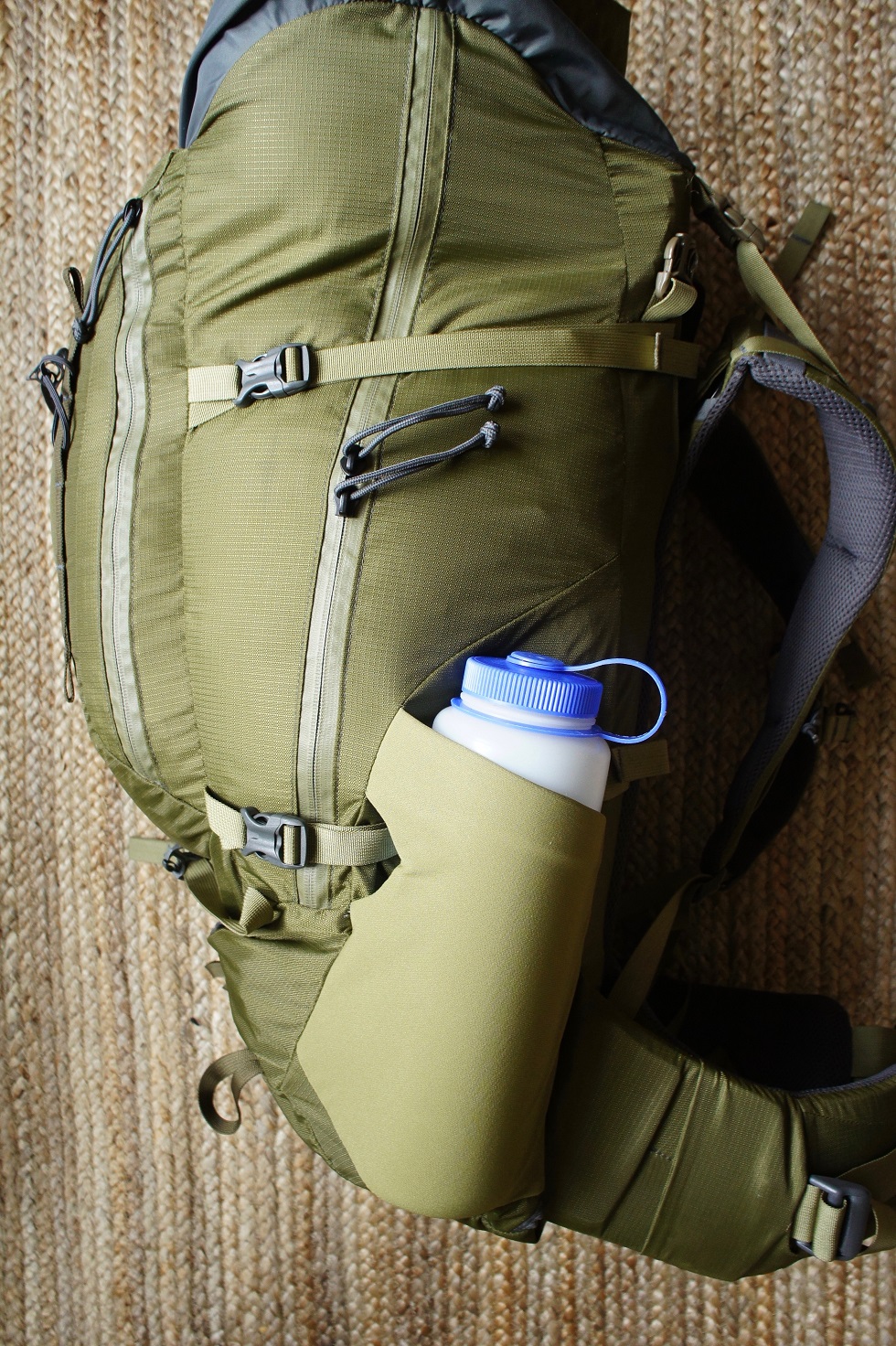
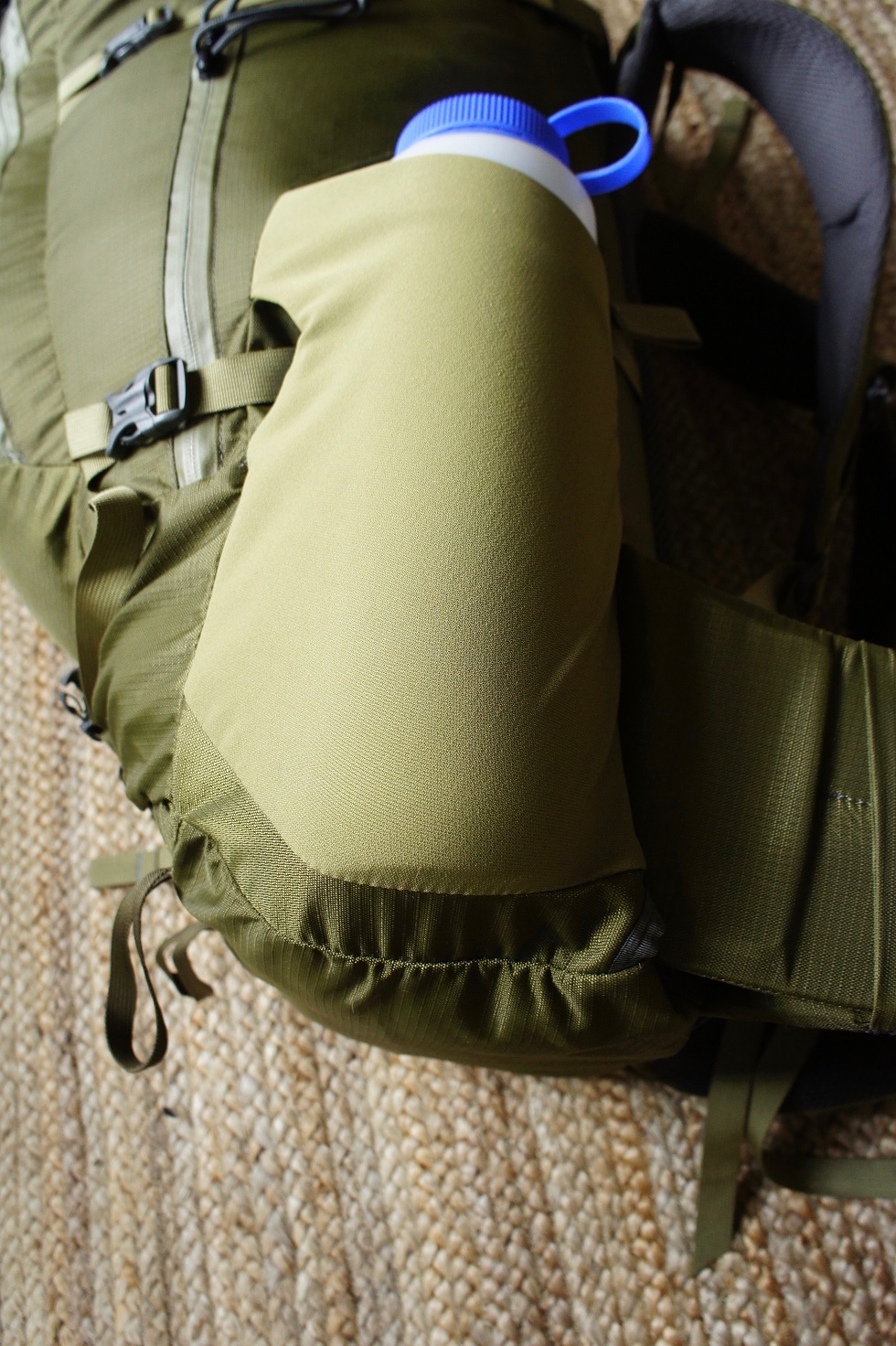
Dual compression straps
MR uses Duraflex SR buckles and included roughly eight inches of excess webbing for strapping on additional items.
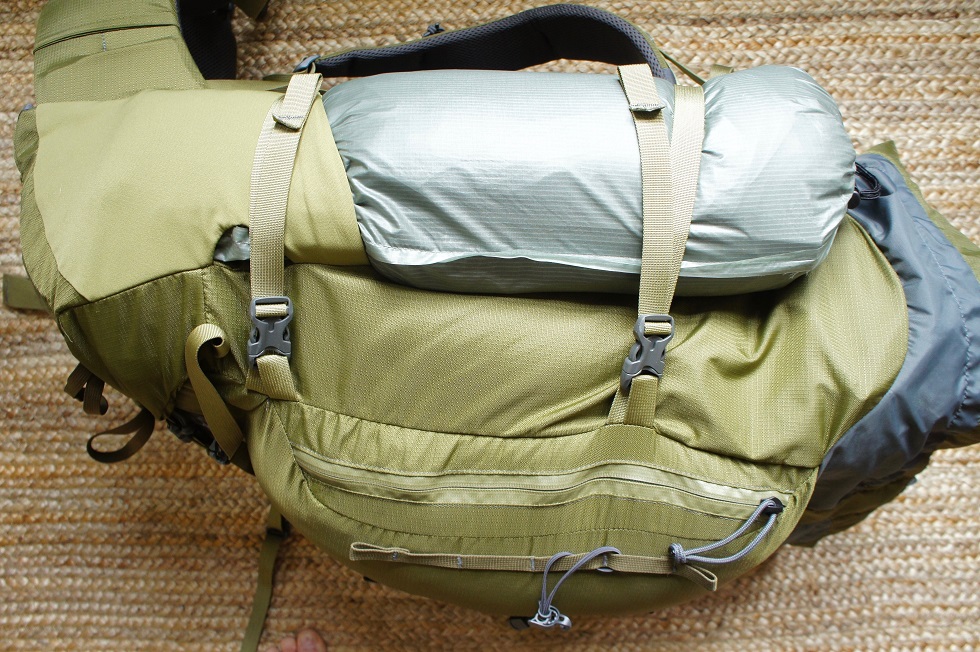
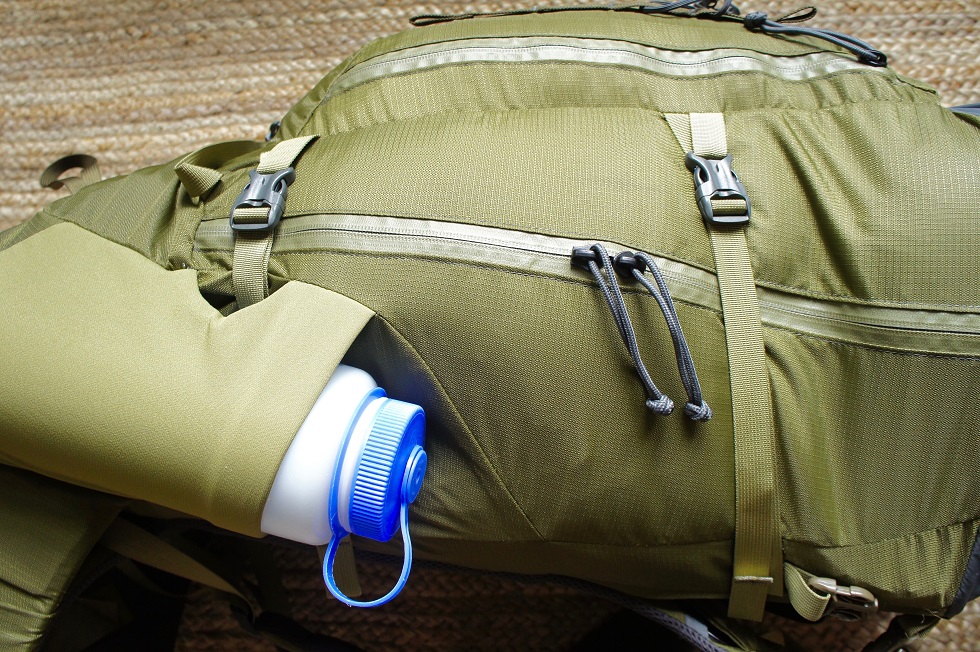
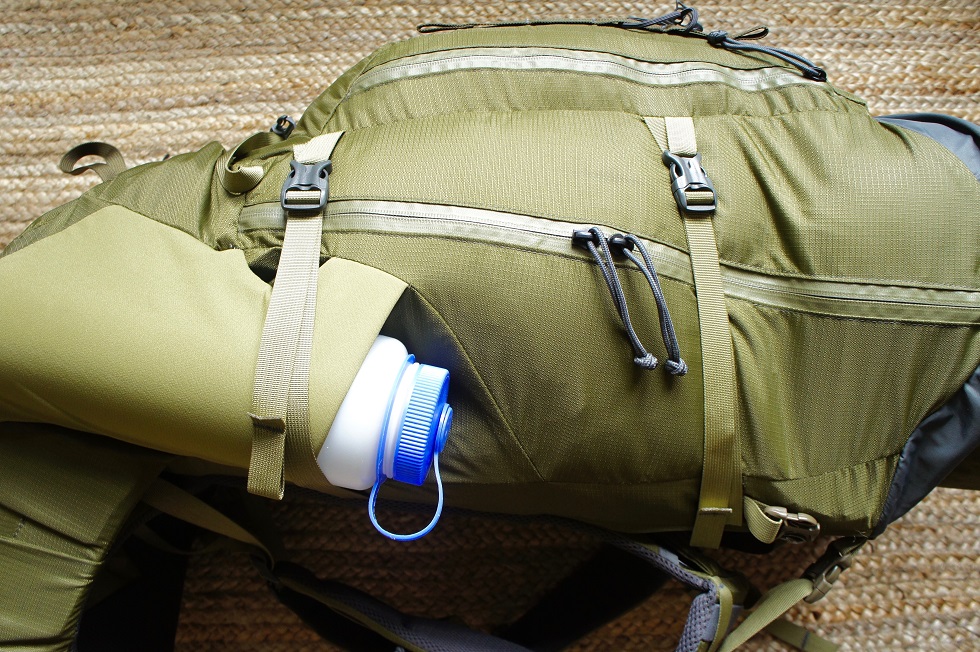
Internal compression strap
This again adds to the clutter of the main compartment but works wonders if you employ it. Compress the contents of your main compartment for load management or use it to hold a rope or a pad.
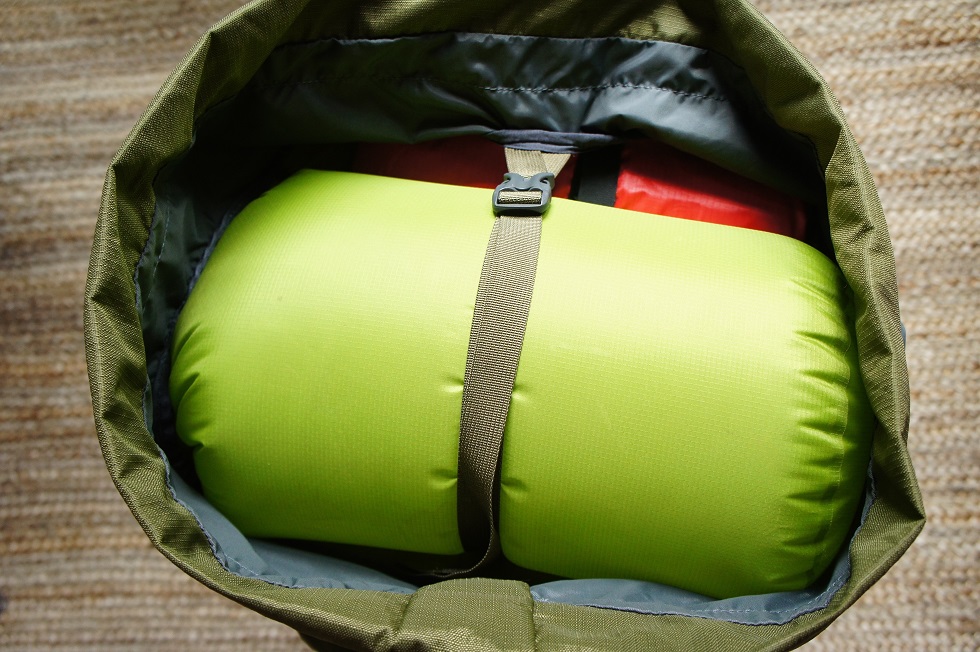
Removable lid/kicker pack
The lid itself is amazing. Huge pockets. Huge zippers. I normally take it off at the end of the day and drag it into the tent with me. I stash a dry bag of camp essentials in one pocket and a dry bag of electronics in the other.
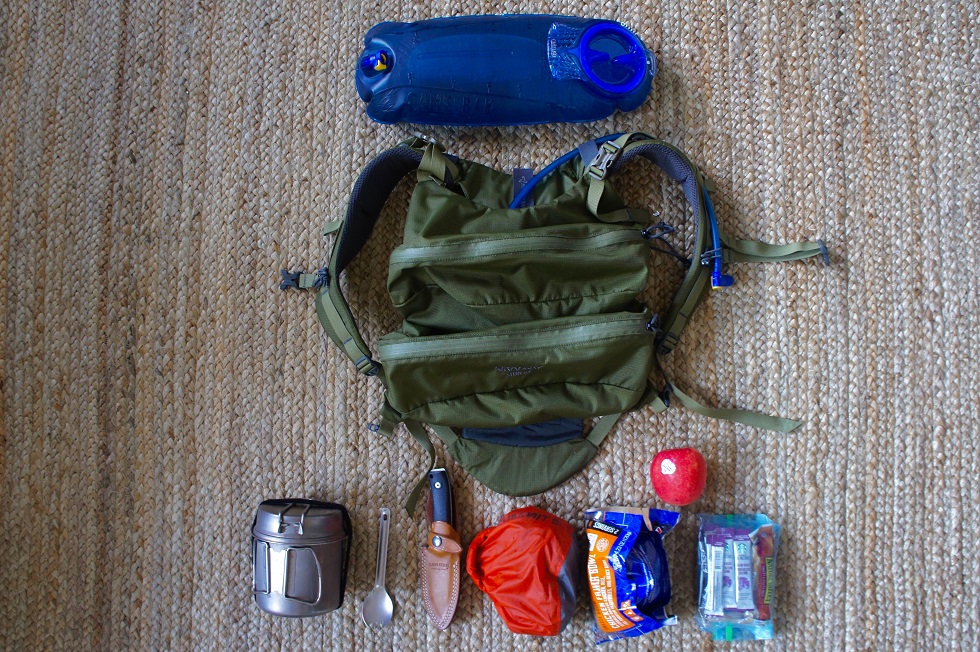
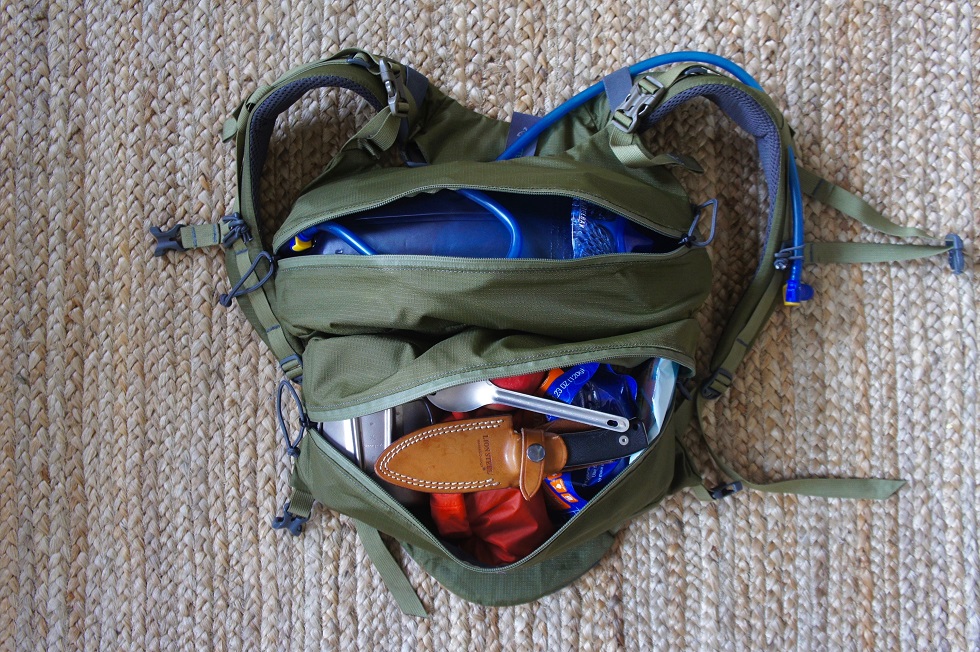
The harness from the main pack is removable and slides into a hidden sleeve under the removable lid and creates a serviceable daypack. What’s nice about this system is you get real, functional shoulder straps on your summit/daypack rather than the all too common webbing or unpadded straps.
"The harness from the main pack is removable and slides into a hidden sleeve under the removable lid and creates a serviceable daypack."
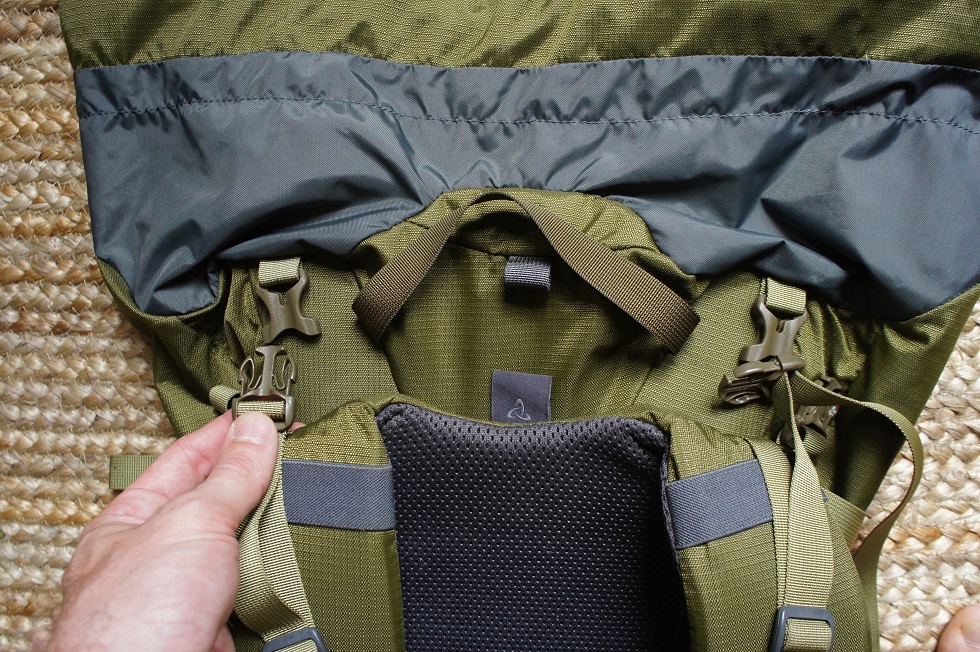
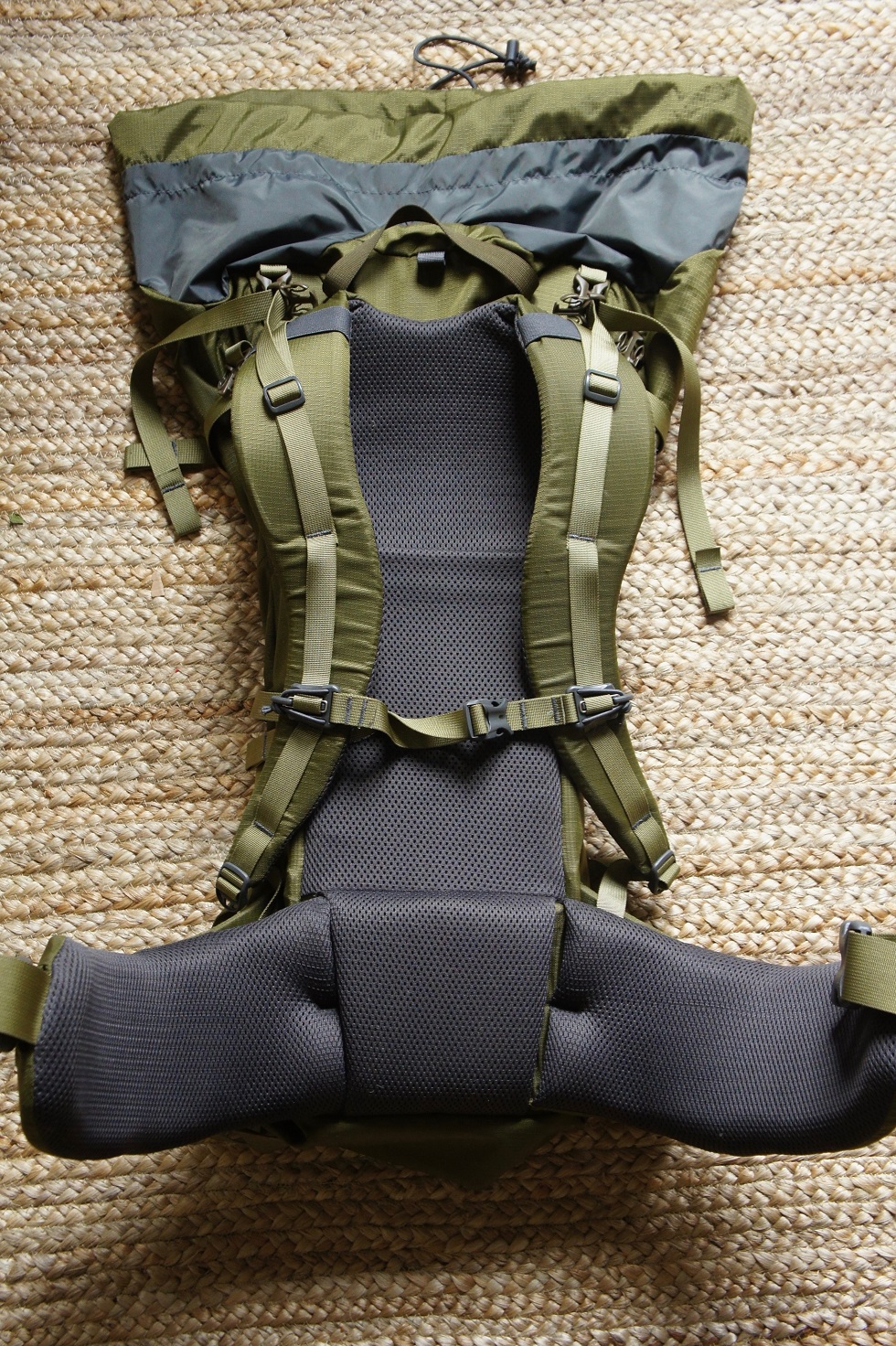
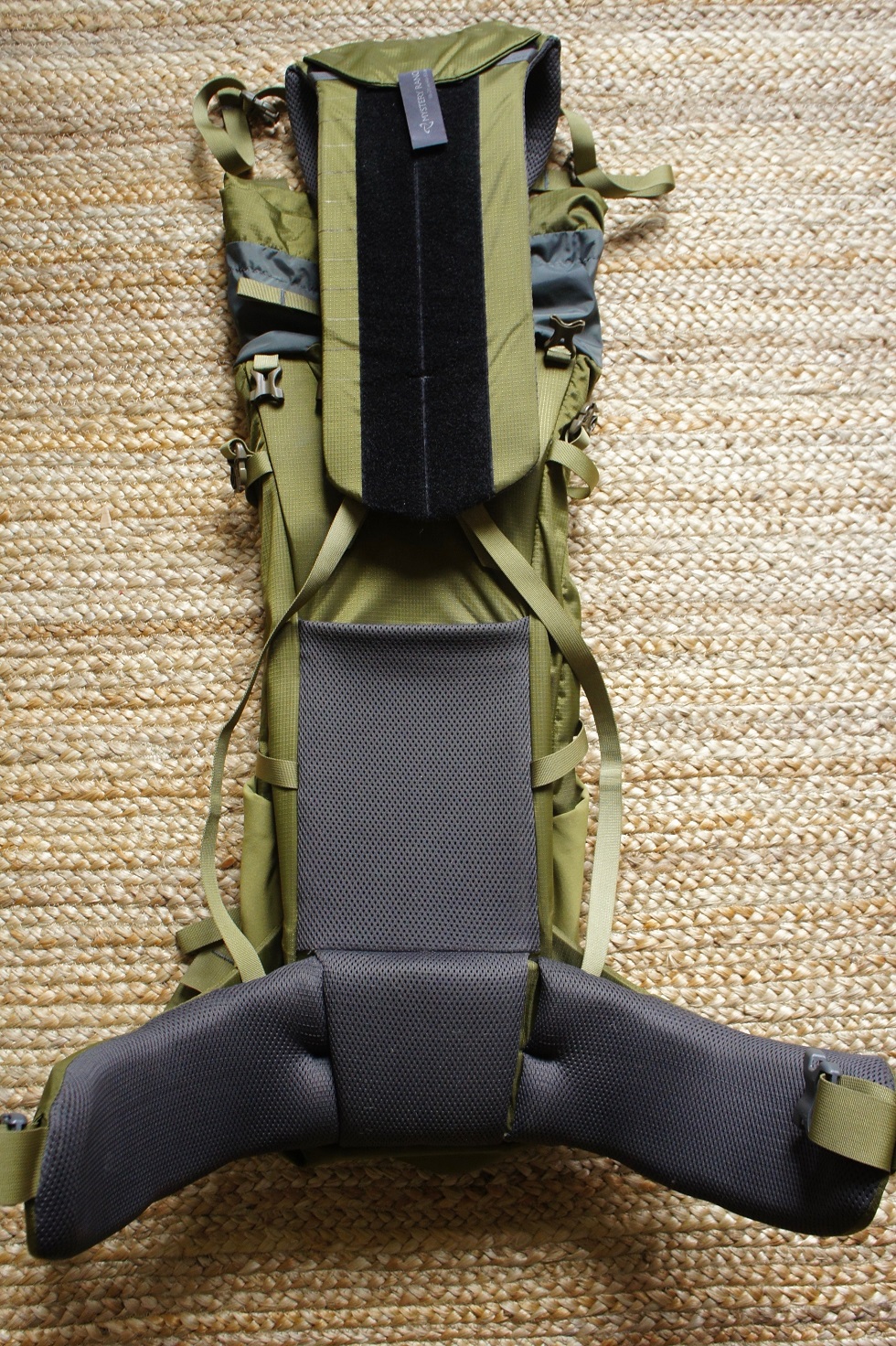
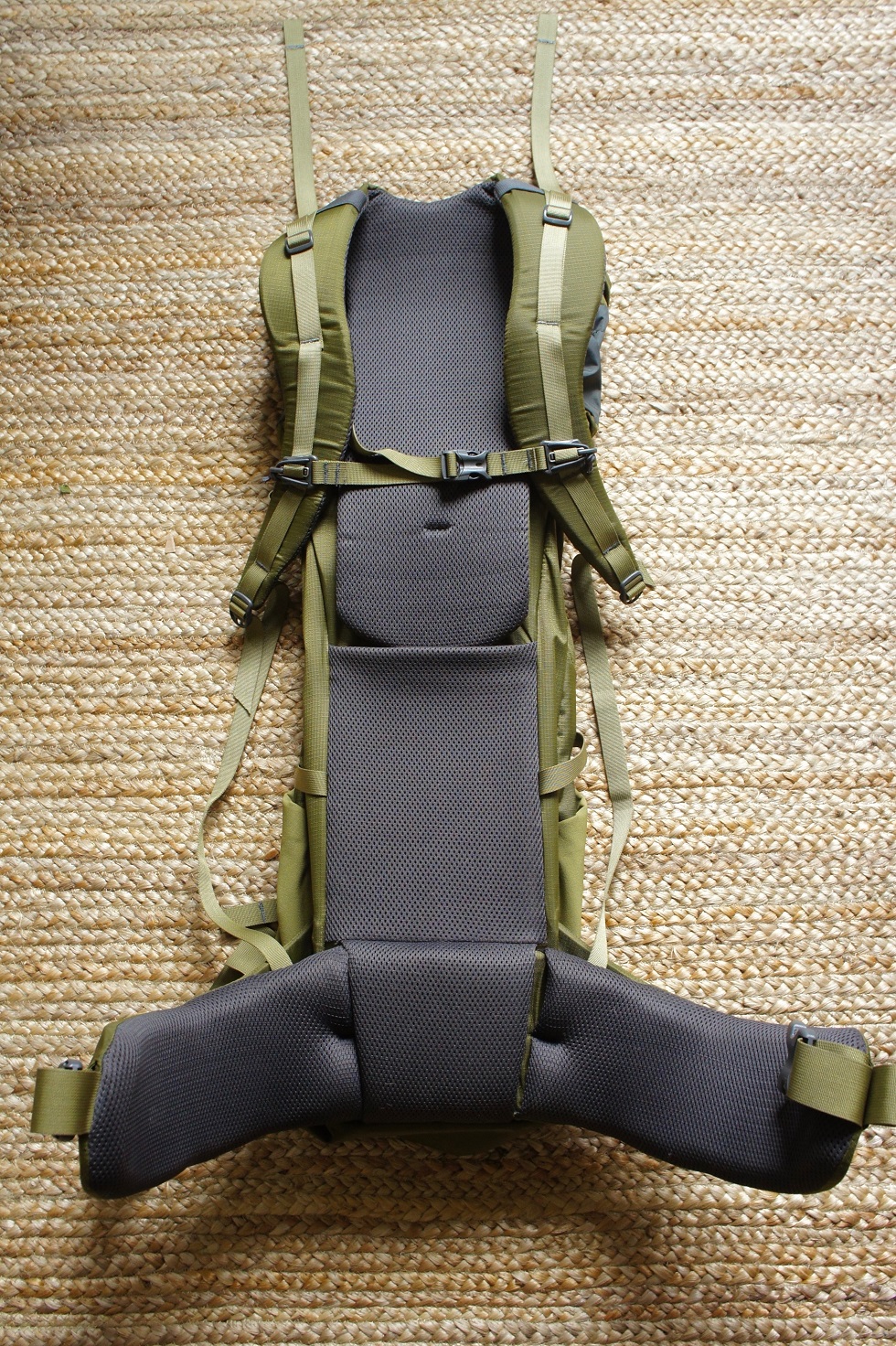
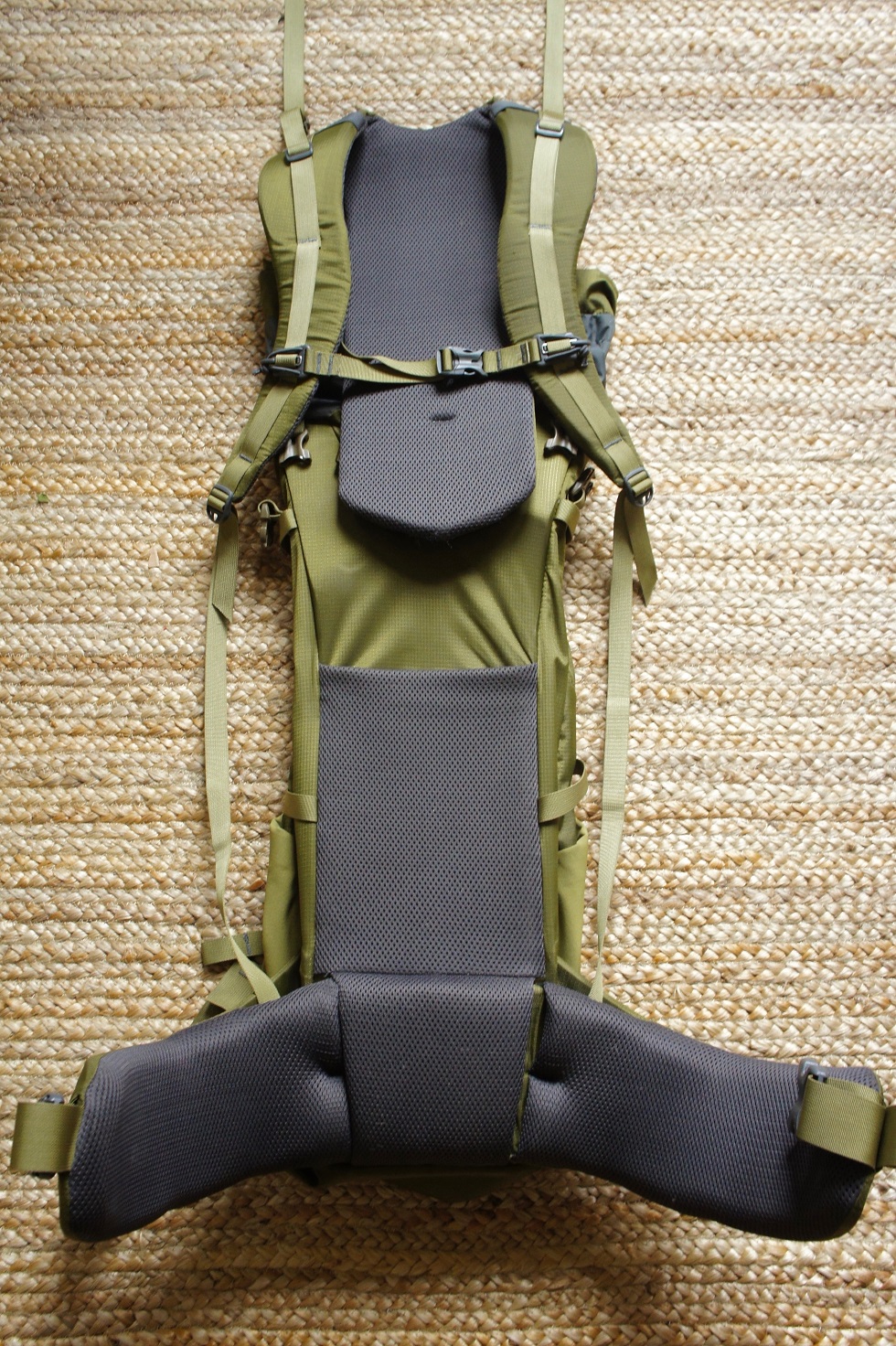
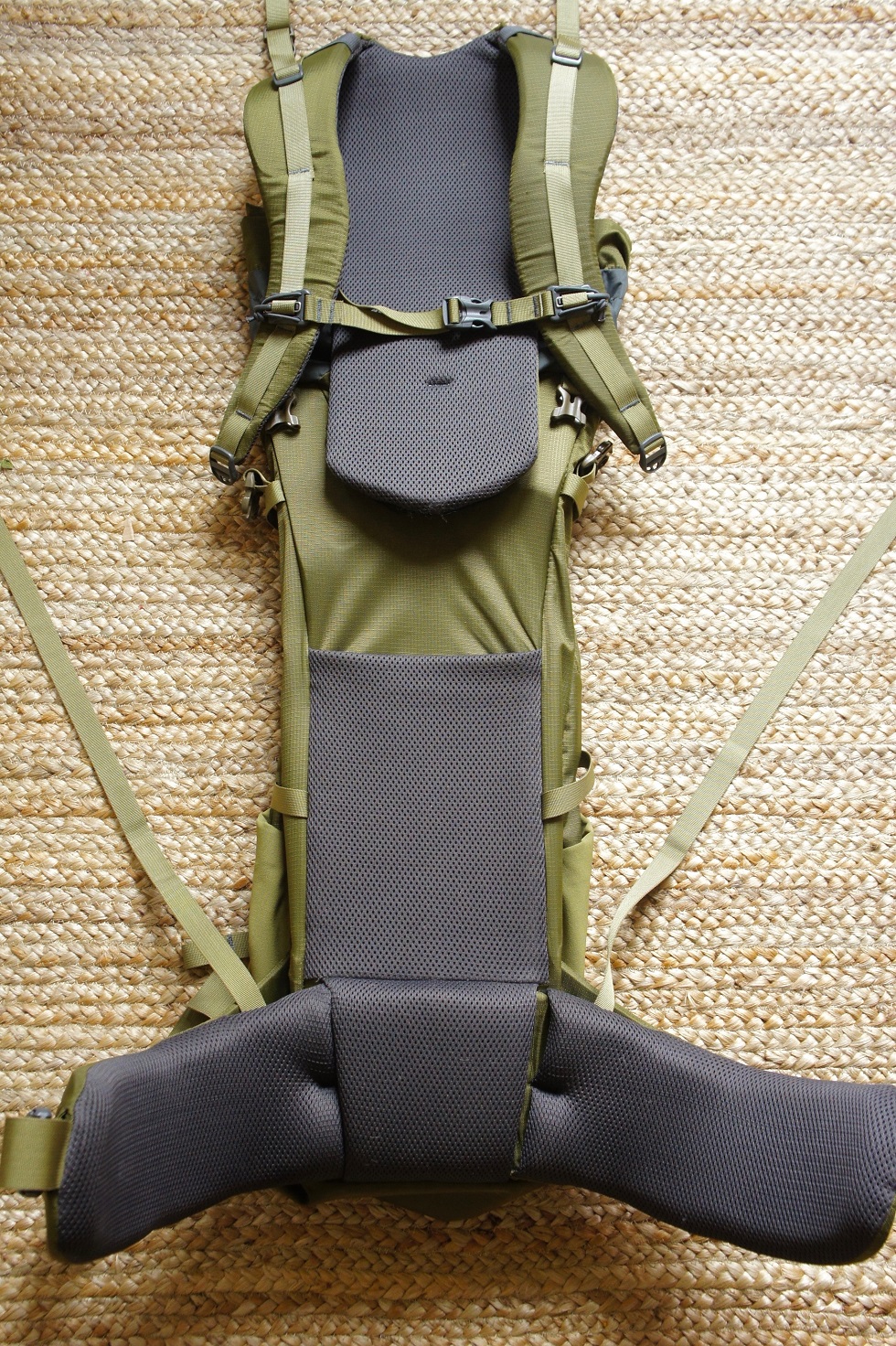
Performance
Space & Access
The usable volume and access is second to none: The Stein offers access to the main compartment via the cinch top, full-length side zip, and the sleeping bag compartment. If you want to use the sleeping bag divider, it’s there for you. If you prefer to leave the main compartment open, you can do that too.
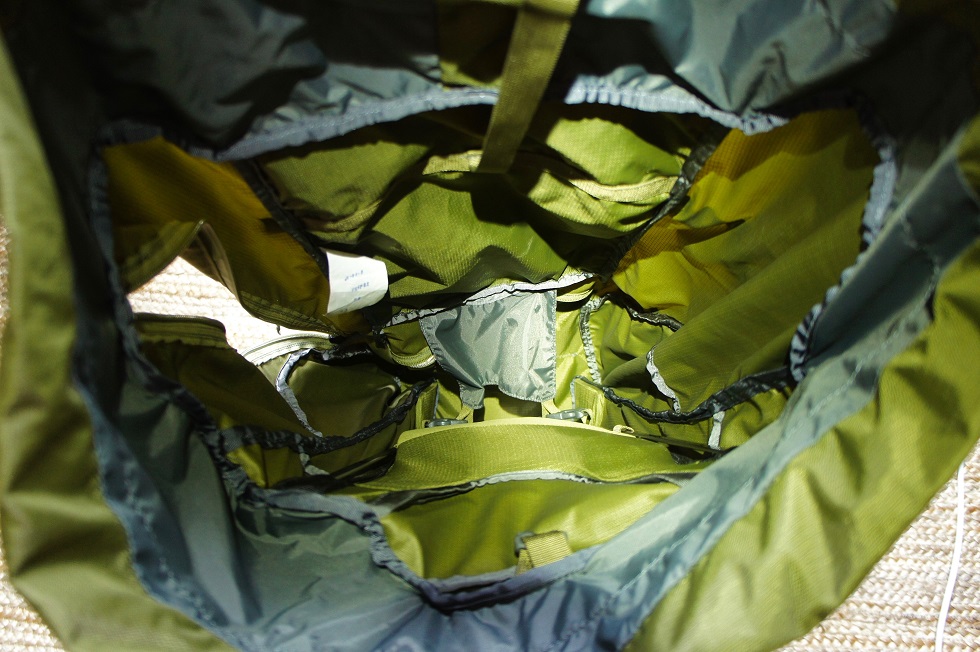
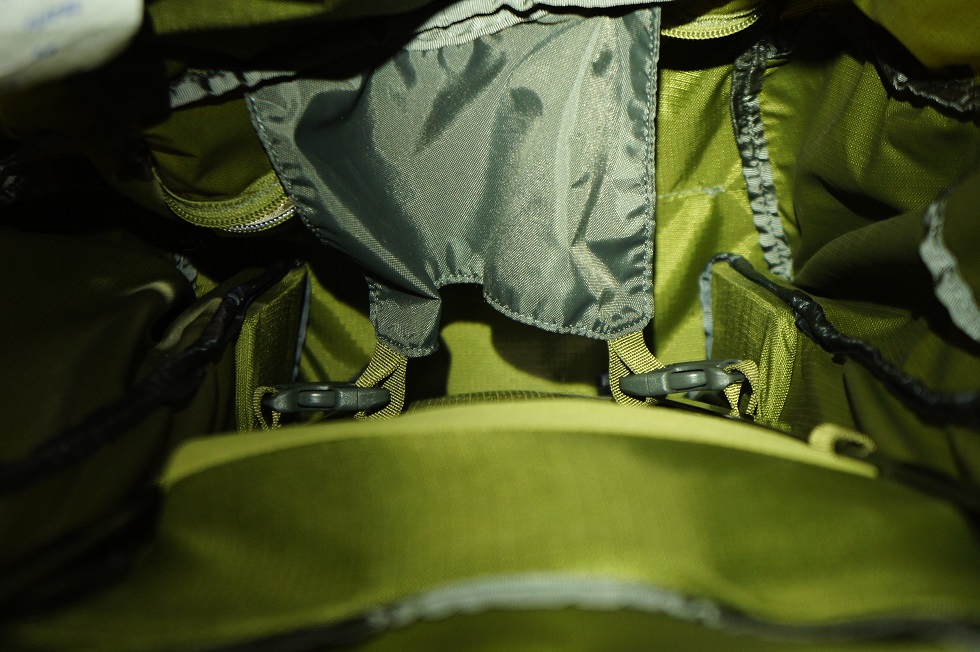
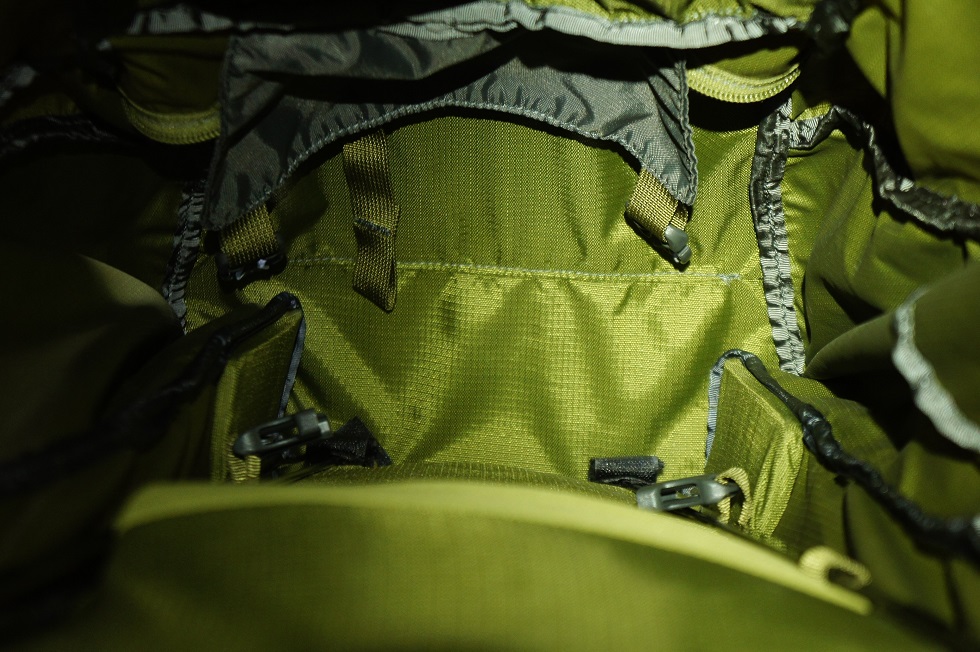
The top lid pockets are wonderfully spacious. You can fit a full 3L/100oz bladder in the uppermost pocket and run a hose to the shoulder via the hydration port. The lower pocket is even bigger and can easily swallow a camera, a day’s worth of food, and a small stove and cook set.
"The Stein offers access to the main compartment via the cinch top, full-length side zip, and the sleeping bag compartment."
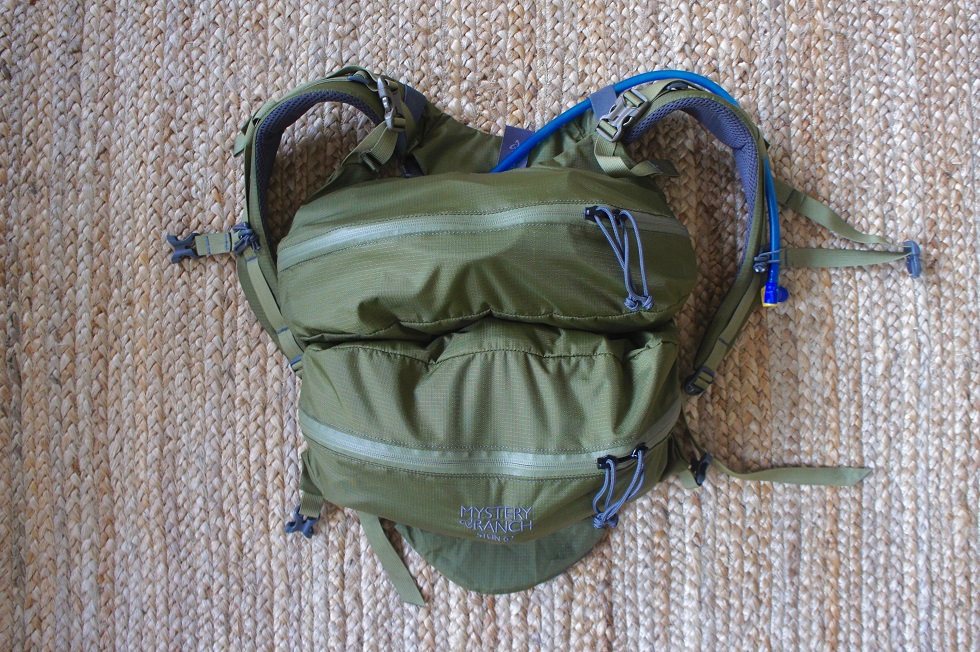
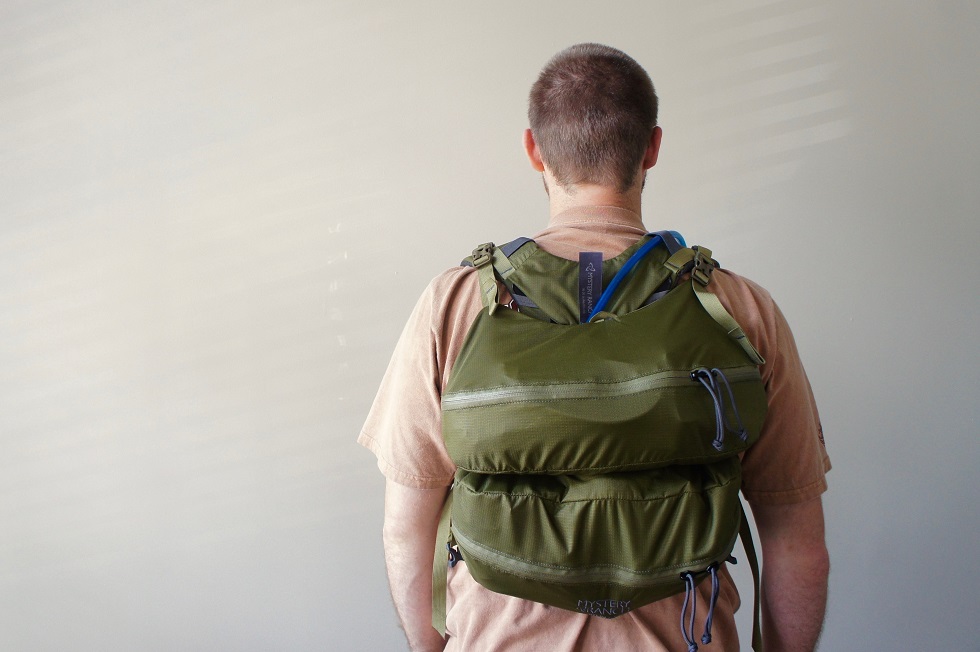
The front face pockets are great for smaller items and additional compartmentalization. Med kit. Mess kit. Small tarp. Whatever. In lieu of a greatly missed front stash pocket, you could use the larger pocket to keep shed layers and/or rain gear.
The side stretch woven pockets have good spring to them and easily hold a Nalgene.
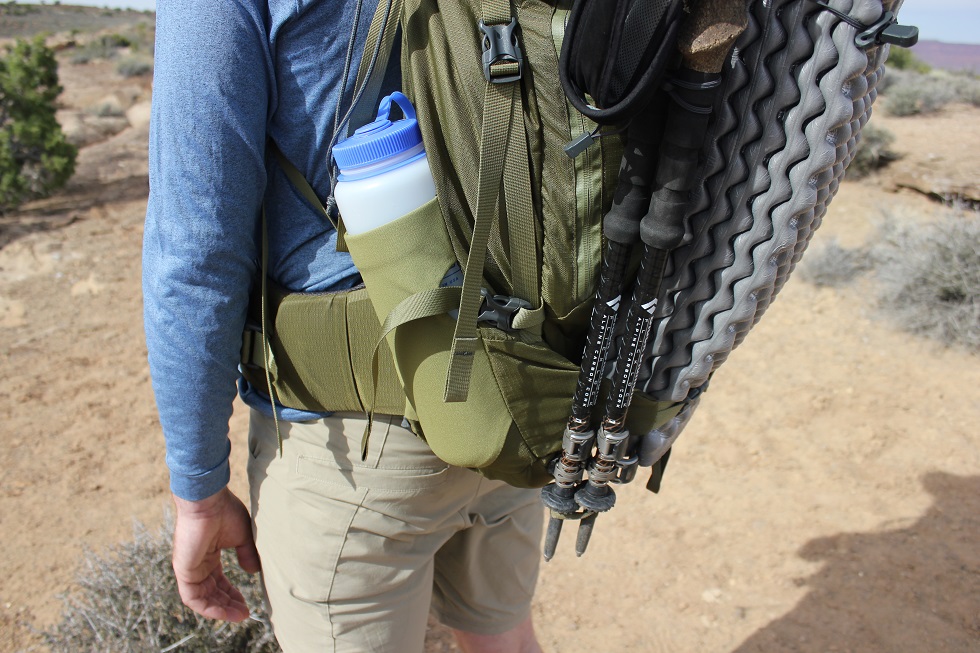
Comfort
The weight transfer of the Mountain Frame is what you’d expect from a Mystery Ranch pack. It’s a bear hug of a suspension. The Mountain Frame includes plastic inserts on the outer face of the shoulder straps, and while they took me a minute to become accustomed to, they provide a more stable surface for load distribution and a slightly more rigid harness. These inserts run from the yoke just over your shoulders, but not down the front of your chest.
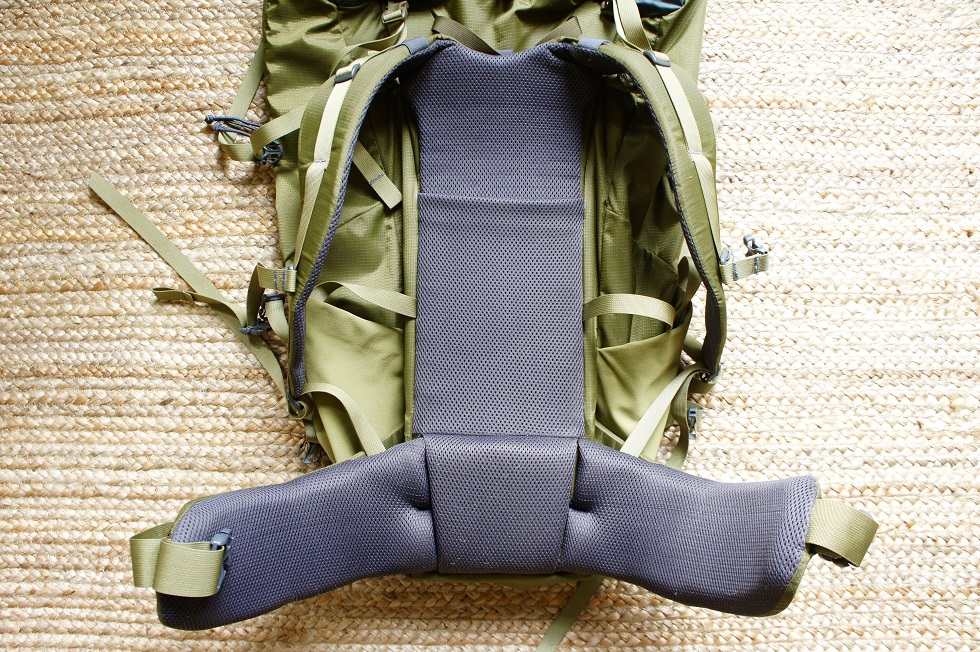
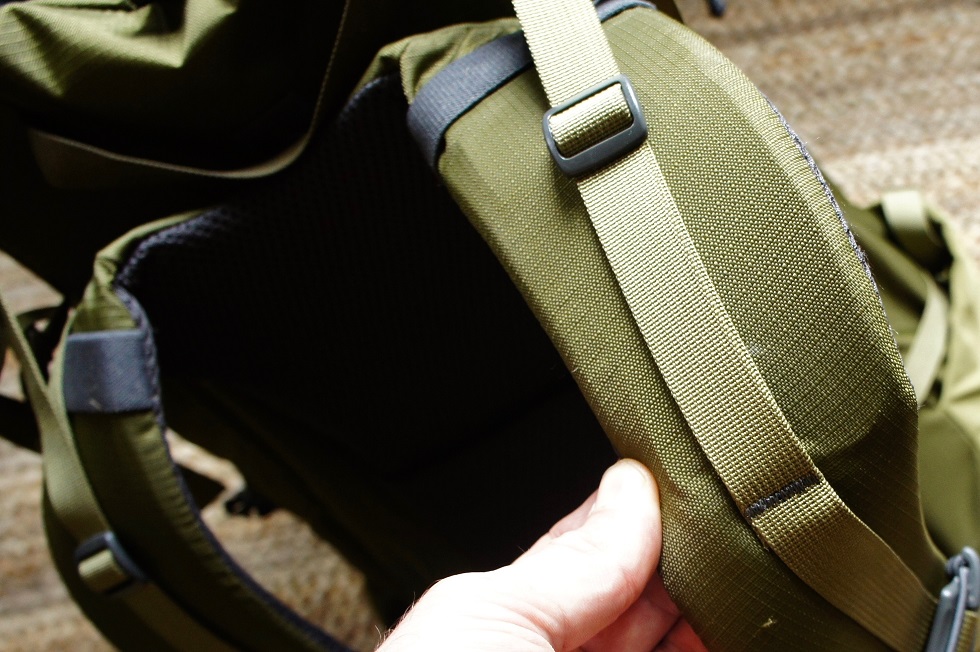
The “wings” are an interesting design feature. They run from the bottom of the pack and slide freely in hip belt slots. The wider the base of your load, the harder the load pushes on these wings, and the tighter the wings push in on the hip belt. In a way, these replace the lower stabilizer straps because, in short, the bigger your load, the harder this system works to push the weight onto your hips.
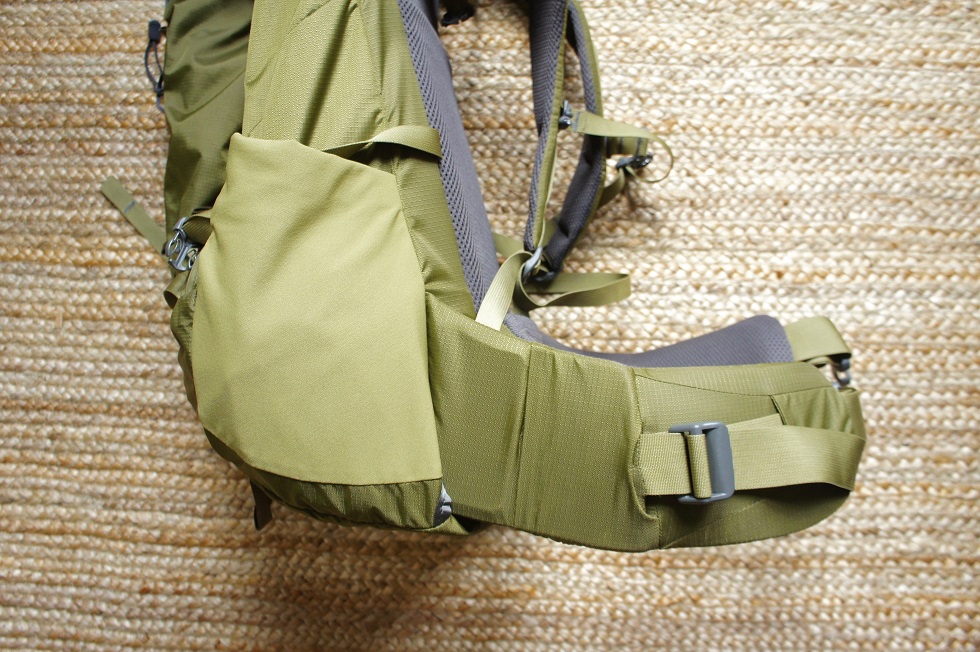
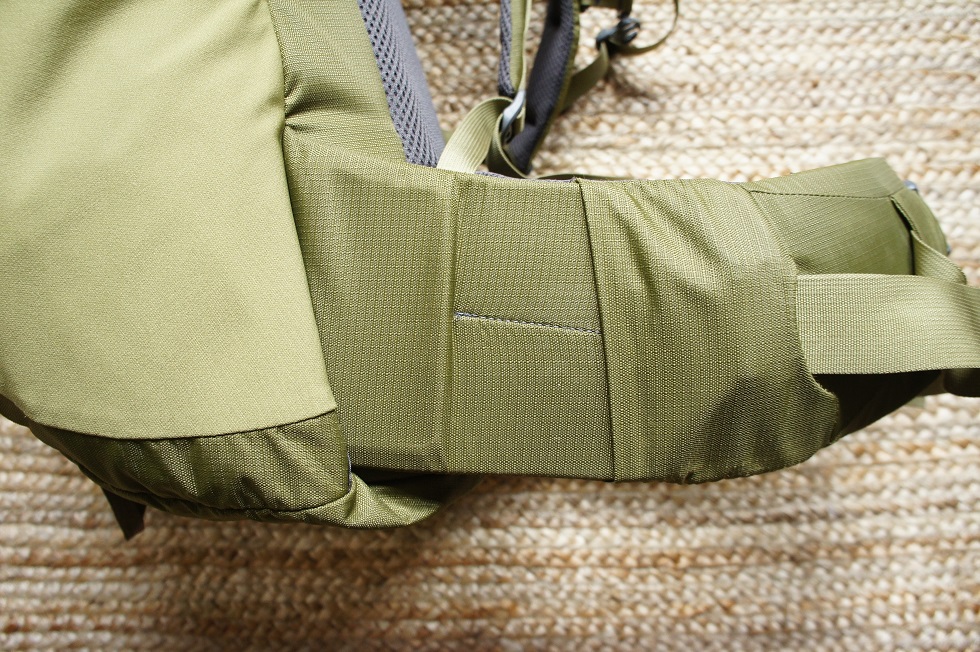
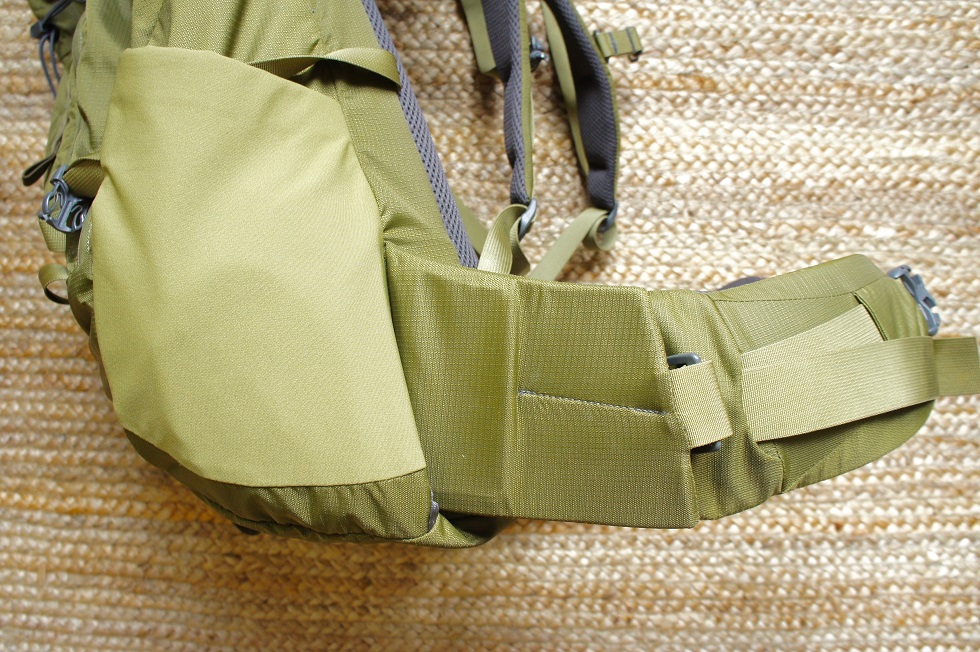
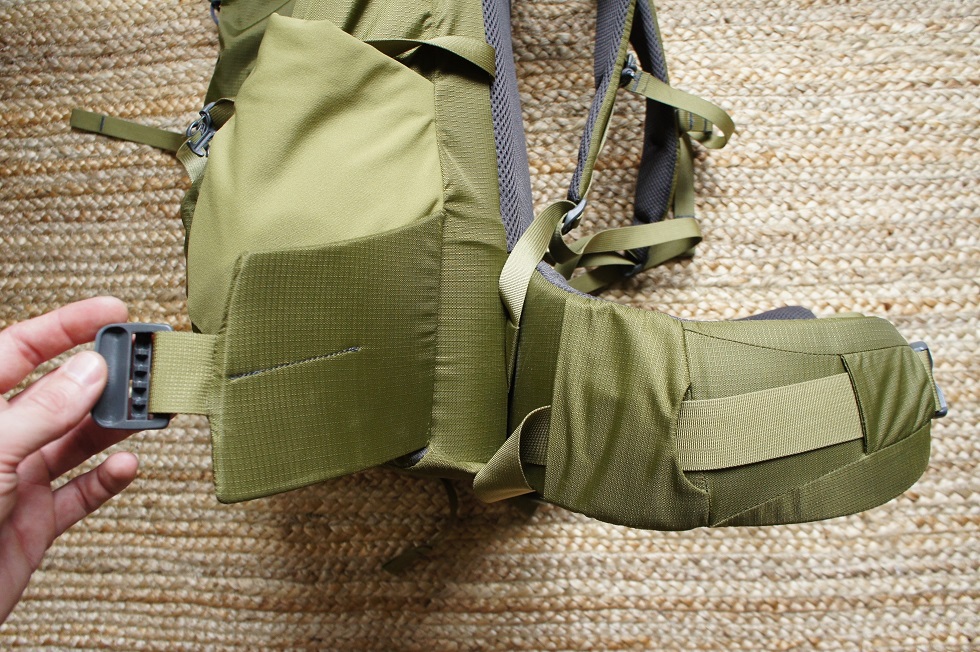
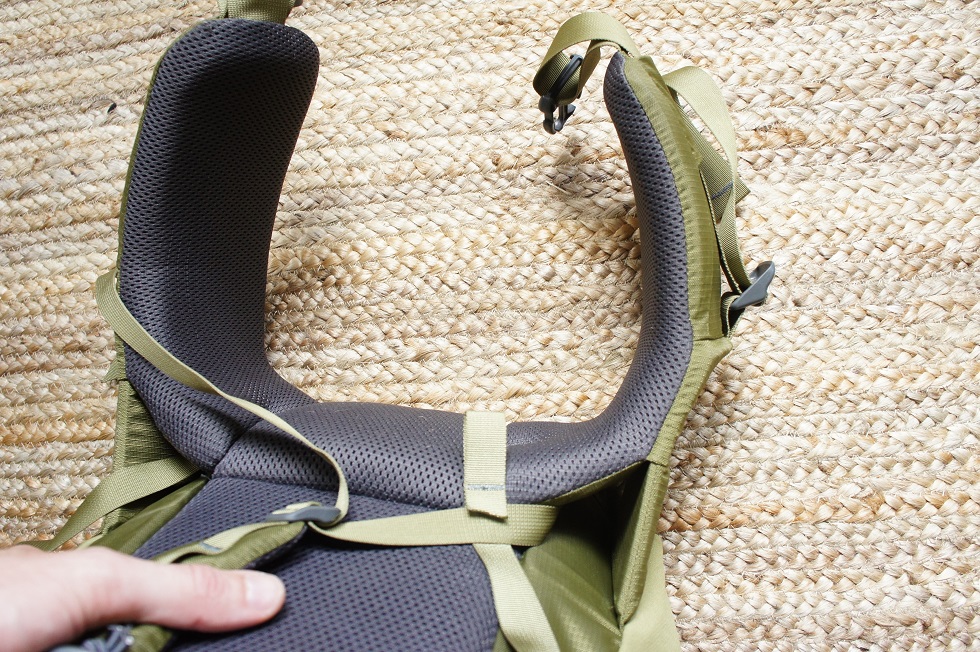
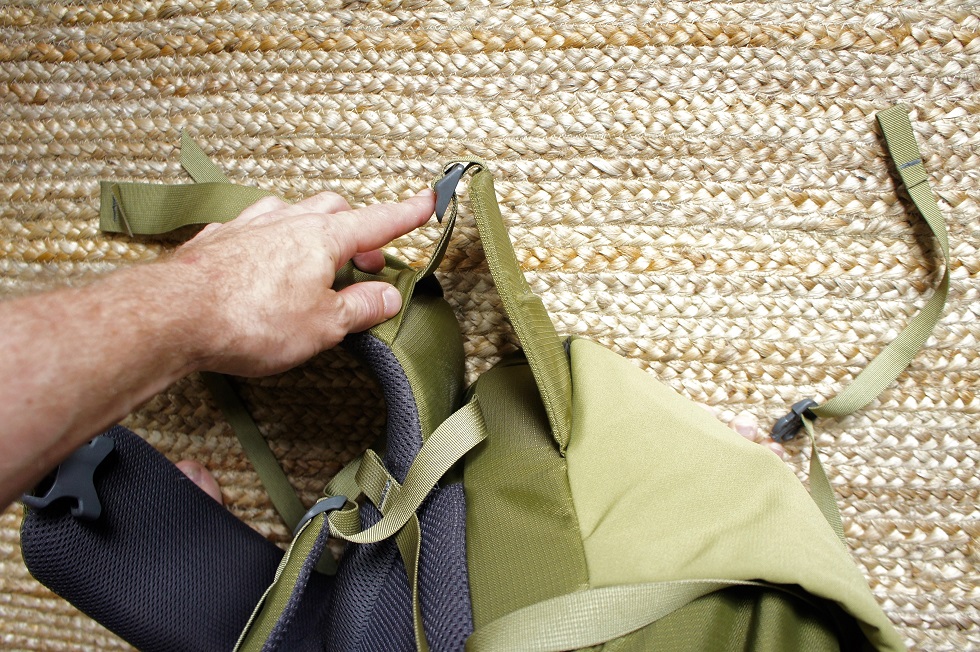
The only drawback of the Mountain Frame is its ventilation, which on several occasions while hiking through the desert I wished was better. Granted, that’s typically how I feel about all of my gear while hiking through the desert.
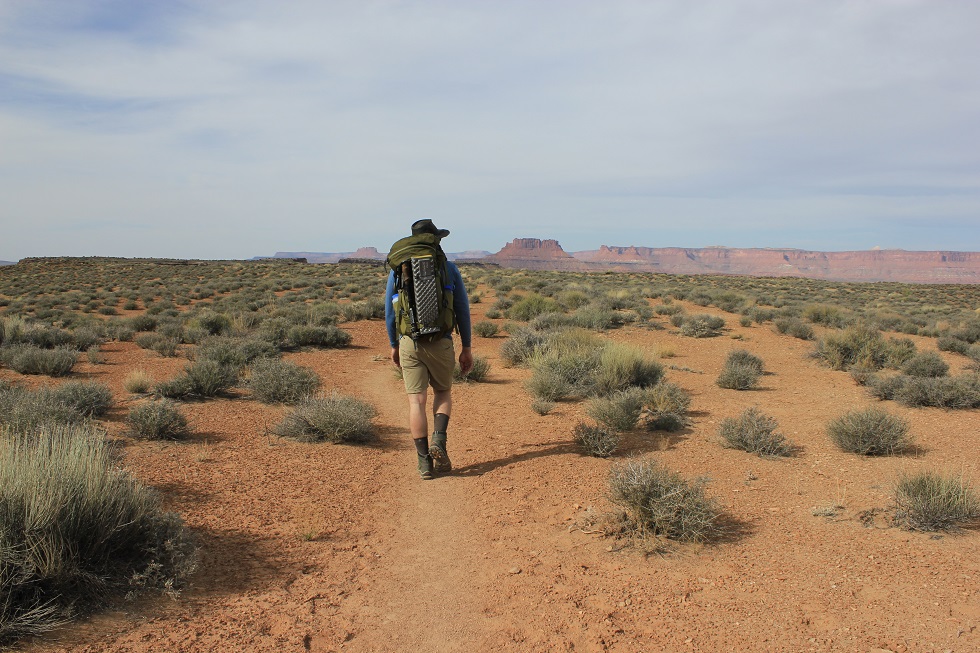
Weatherability
If you’re going to be using a pack in a wilderness environment, you should be holding up your end of the deal and putting electronics and necessities in dry bags and zip locks.
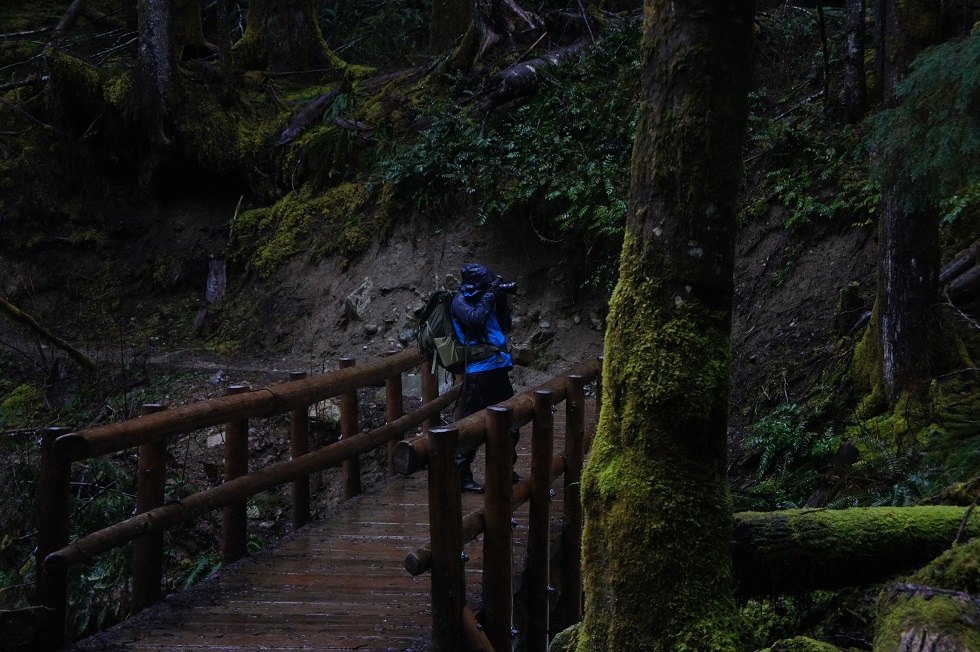
The first two occasions I had the pack out were sopping wet. Inevitably, unavoidably wet. The first trip along the Hoh River in the Olympics we saw 18” of wet snow on the ground and another 2” of snow sleet and rain falling over the next day. My essentials, sleeping bag and extra clothes, electronics, and general fire kit remained dry because they were in their own waterproof containers. Fabric items I had in the lid, like a Buff and a pair of softshell gloves, were wet but not saturated. Dry bags in my main compartment were wet, but their contents remained dry.
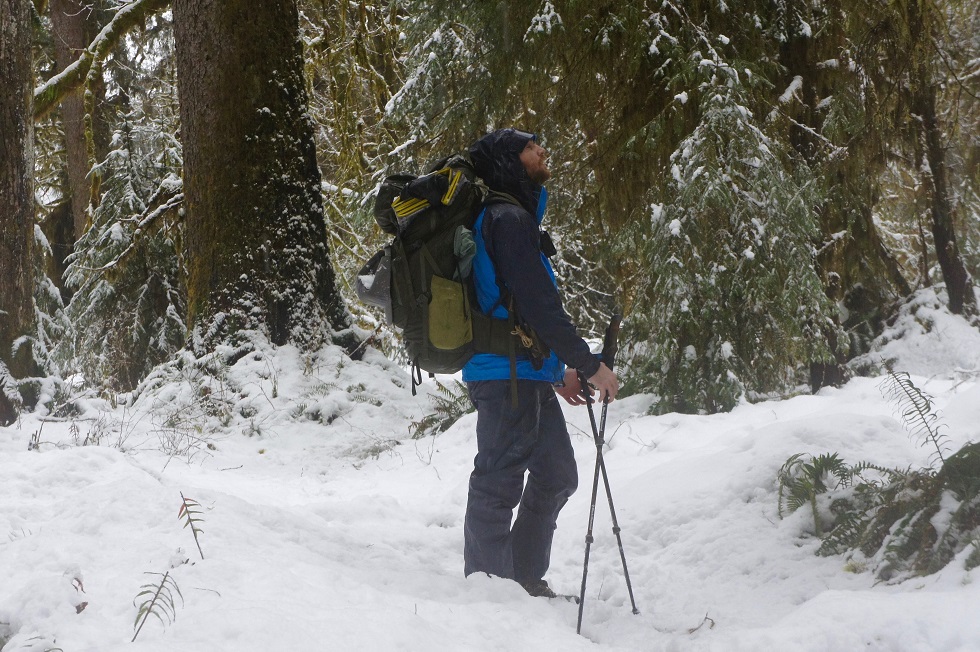
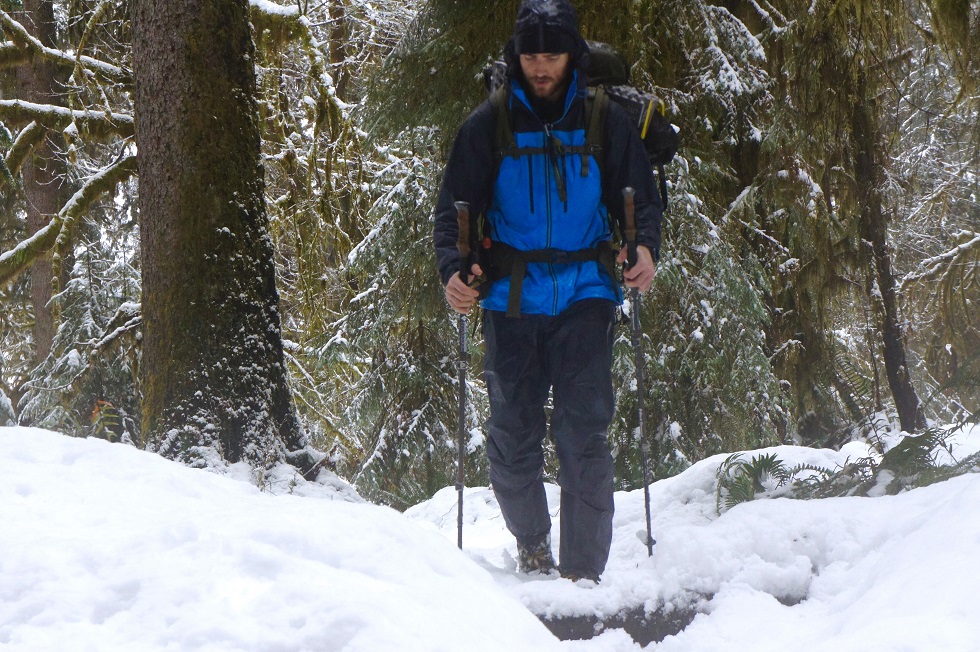
The second trip along the Pratt River in the Cascades, we hiked through a half-inch of rain, conservatively, throughout the morning and into midafternoon. My dry bag of electronics in the top lid was wet to the touch but the contents remained dry. A fabric med kit I had in the large face pocket was wet, but I did not notice any moisture in the main compartment.
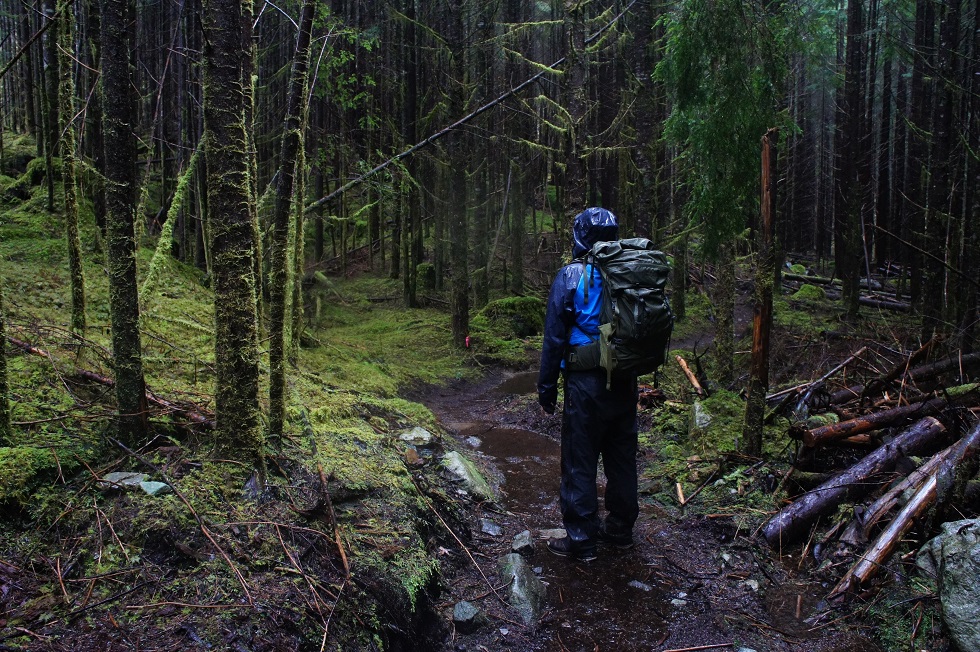
The 400D does a good job of holding off the elements, but sometimes you just can’t win.
Changes to Consider
I’d be hyped to see two additional compression straps placed on the bottom of the pack for attaching additional items. The daisy chain is great and certainly up to the task, as are the side compression straps, but two 2cm pieces of webbing on the bottom for larger or wet items like a closed cell foam pad and a tarp would be ideal. The Mountain Frame can handle huge loads, and the addition of two bottom straps would allow the user to take better advantage of that impressive load carrying potential.
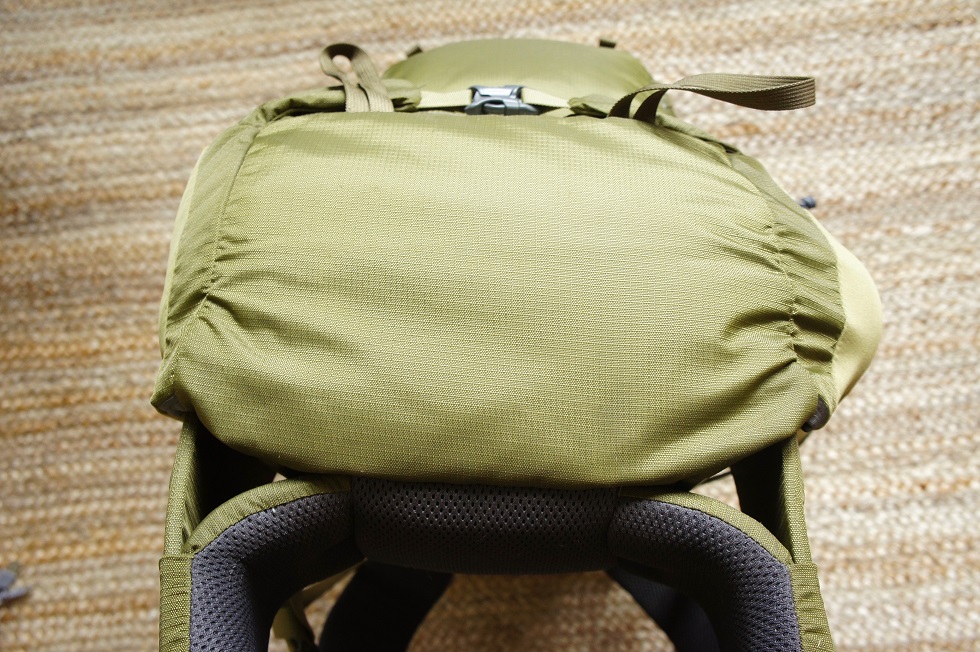
Nitpicking
The two front face pockets are awesome, but I think the way the smaller 3D pocket is sewn into the larger envelope-style pocket is strange. It’s free-floating inside, and I think it’d be cleaner if it were incorporated into the front face or the back wall of the larger pocket.
Alternatives to Consider
The closest competition for the MR Stein 62 in terms of features, price, and capability is the Osprey Aether 70 which has a nearly identical feature list, retails at $11 USD more, and has a claimed upper load limit of 60 pounds. Other awesome packs to look at include the Hill People Gear Ute for your truly heavy-duty and versatile needs, the ULA Catalyst for lighter trips and longer distance adventures, and the Thule Versant 60 and the Gregory Baltoro 65 which are both great all-rounders from reputable companies.
Verdict
For personal use, my affinity for lightweight travel has dropped my base weight below 11 pounds. As I continue to walk farther and upgrade my gear, I’m sure that trend is likely to continue, so this is overkill for my style and needs.
However, as a new field guide responsible for others’ safety, and often their equipment, I need to rely on a pack to haul big loads without having to think twice about it. The Stein fits that bill. It’s burly, well built, and a truly noble companion for adventure. If you need a rugged pack that won’t quit and can make do with the 62-liter ceiling, I don’t think there is a more capable bag out there for the money.
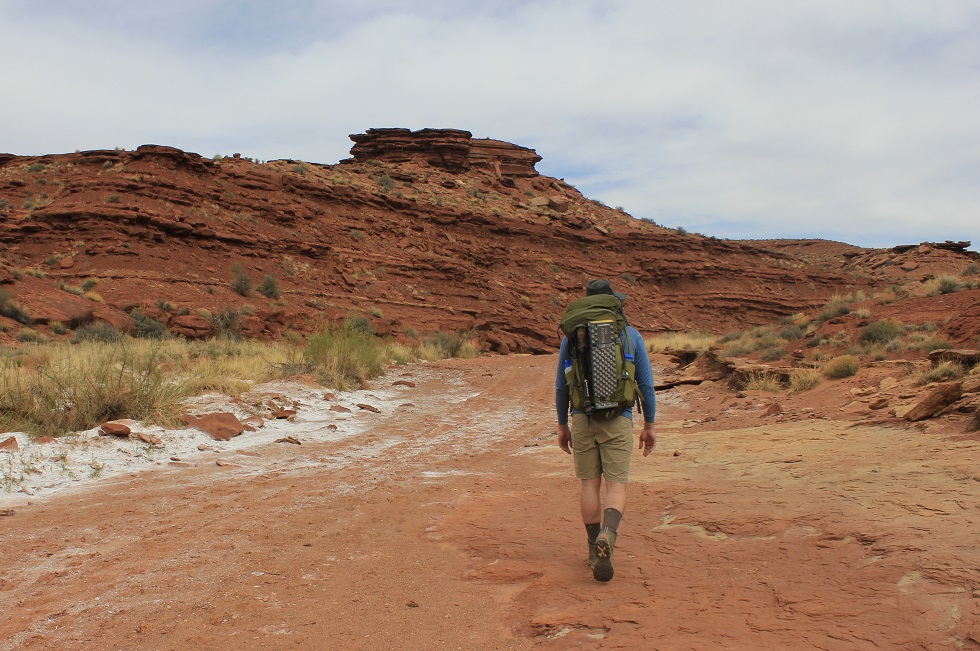





 Carry Awards
Carry Awards Insights
Insights Liking
Liking Projects
Projects Interviews
Interviews